Roundtable: What's the best format for an expanded World Cup?

World Cup expansion appears to be inevitable. As part of FIFA president Gianni Infantino's platform when running for office, he pitched a 40-team World Cup. Since then, his plan has evolved to a 48-team event for the world's greatest spectacle, which would conceivably go into effect for the 2026 competition.
Ahead of FIFA's meetings in Zurich next week, when the future of the sport's spotlight event is discussed by the FIFA Council, we took it upon ourselves to ponder World Cup expansion. While our expert panel is in agreement that the 32-team format needs no tweaking, we're embracing the change that appears to be on the way.
Here are our grand ideas:
Alexander Abnos - Don't just expand it: Double the field!
It’s high time we embrace reality. The World Cup is going to keep expanding and expanding, regardless of what anyone other than those with a whole lot of money think about it. If 42 teams doesn’t work, FIFA will expand to 48. If 48 doesn’t work, FIFA will expand to 52. It’s next to impossible to imagine FIFA ever voluntarily downsizing the size of its flagship event, so long as it remains the cash cow that it is.
Given that, I feel the best that can be done at this point is to steadfastly maintain a primary positive aspect of the World Cup: The perfect balance of its structure. That’s why, if I had to expand the tournament, I’d take the (admittedly crazy) step of doubling the number of teams to 64.
Young USMNT goalkeeping trio gets shot as Klinsmann seeks a worthy successor
Part of the beauty of the 32-team World Cup is how symmetrical and easy to understand it is. There’s no need for awkward one-off pre-group stage knockout games (as proposed by Infantino), no use for ranking third-place teams (a tournament feature I strongly dislike)—the top two in each group advance to the knockout round. No fuss, no muss. A 64-team World Cup keeps that exactly the same, it just doubles the number of groups, and adds a Round of 32 to the knockout stage. After axing the pointless third-place game, every four years we’d be blessed with a 127-game overdose of soccer.
No doubt, organizing a tournament this large would be a gigantic logistical challenge. That, taken the right way, could actually be an advantage. So many matches might encourage more joint bids for hosting, potentially lessening the burden on any one country to serve as host. It’ll also ensure that all stadiums, especially those built specifically for the tournament, see plenty of action (Arena das Dunas in Natal, for example, cost well over $100 million to build, and it only hosted four matches).
• WATCH WORLD CUP QUALIFYING: Stream matches live on FuboTV
Will more of those matches be “unsexy” games between, say, Lithuania and Guatemala? Sure…but that will be the case in almost any expansion format. The competition will be heavily diluted with 64 teams, especially at first. But over time, as more and more smaller nations get the experience, recognition, and money from going to a World Cup, I believe the gap will close. In the meantime, there will be more opportunity than ever before for Iceland-at-Euro-2016 types of stories to happen, and that’s no bad thing.
Brian Straus - One obvious solution, one radical one
This will be fun. And also sad. But it’s inevitable, and it’s also an assignment. So let’s wreck the greatest month in sports. Let’s ruin the World Cup.
At the moment, with 64 games and 32 teams, it’s all perfectly balanced. Qualifying still means something in most places, but the World Cup remains pretty inclusive and representative. We’re guaranteed at least a few riveting, instantly memorable games. The competition is hard to win, but it doesn’t drain the participants or drag on our patience too much. The format is fair and easy to follow. It’s pretty close to ideal. So naturally, FIFA wants to mess with it.
Mailbag: After Bradley, who's the next American coach to make it big overseas?
The World Cup is going to grow. There’s too much interest and too much money to be made. So how do we do it without destroying every last vestige of that balance? By keeping these key principles in mind: the games either must matter or pit elite countries against each other. And there must be reward for victory and consequences for defeat. Motivated teams make for entertaining soccer. Euro 2016 featured great stories in Iceland and Wales, but the tournament itself was a snoozer because the stakes weren’t high enough during the group stage. By the time the knockout rounds rolled around, most survivors weren’t able to find a higher gear. When Pepe is the key to the title, it’s probably safe to skip the highlight video.
Infantino’s 48-team proposal is ridiculous. Countries aren’t going to spend tons of time and money selecting, training and marketing a World Cup team only to see them fly home after a couple of days and 90 minutes of action. So let’s hope there’s enough restraint at FIFA headquarters to expand only to 40.
Here are two potential formats—one relatively obvious and one a bit more radical.
The obvious one is to divide the field into 10 groups of four teams each. The group winners and six runners-up with the best records move on to the round of 16, and the World Cup unfolds as normal from there. For the four second-place finishers who don’t advance, there’s a little sympathy—but not much. Win your group. Yes, some quartets are more difficult than others, but that’s the case now and always has been. The added incentive to get results and score goals in order to secure one of those wild card spots will have the opposite affect of allowing third-place teams to advance. The group stage games will matter—a lot.
The Cuba Cinco: Fans skirt travel ban to witness USA's 2008 World Cup qualifier
Now for the radical idea. It’s crazy, but so is a 40-team World Cup. Identify the top 12 qualifiers. Each of the five confederations except Oceania is guaranteed one team among that dozen. The remaining seven sides will be selected at large, NCAA tournament style. We can debate later how the 12 are chosen (playoff, ranking, etc), but the race for those spots should spice up qualifying around the world. Draw those elite 12 teams into three groups of four. Then place the remaining 28 teams into seven additional groups.
The first three quartets will feature a host of must-see games. Here, finishing third is enough to advance. Perhaps the depth of quality in those groups and the knowledge that three very good teams will head home early will be enough to raise the stakes in the first round. In the other seven groups, there is no leeway. Only the winners move on.
That produces your 16 knockout-stage teams. It may not work. It’s fun to imagine. It’s too bad we have to.
GALLERY: USMNT, USWNT results in 2016
U.S. Soccer in 2016: USMNT and USWNT year in photos
Klinsmann fired, replaced by Arena
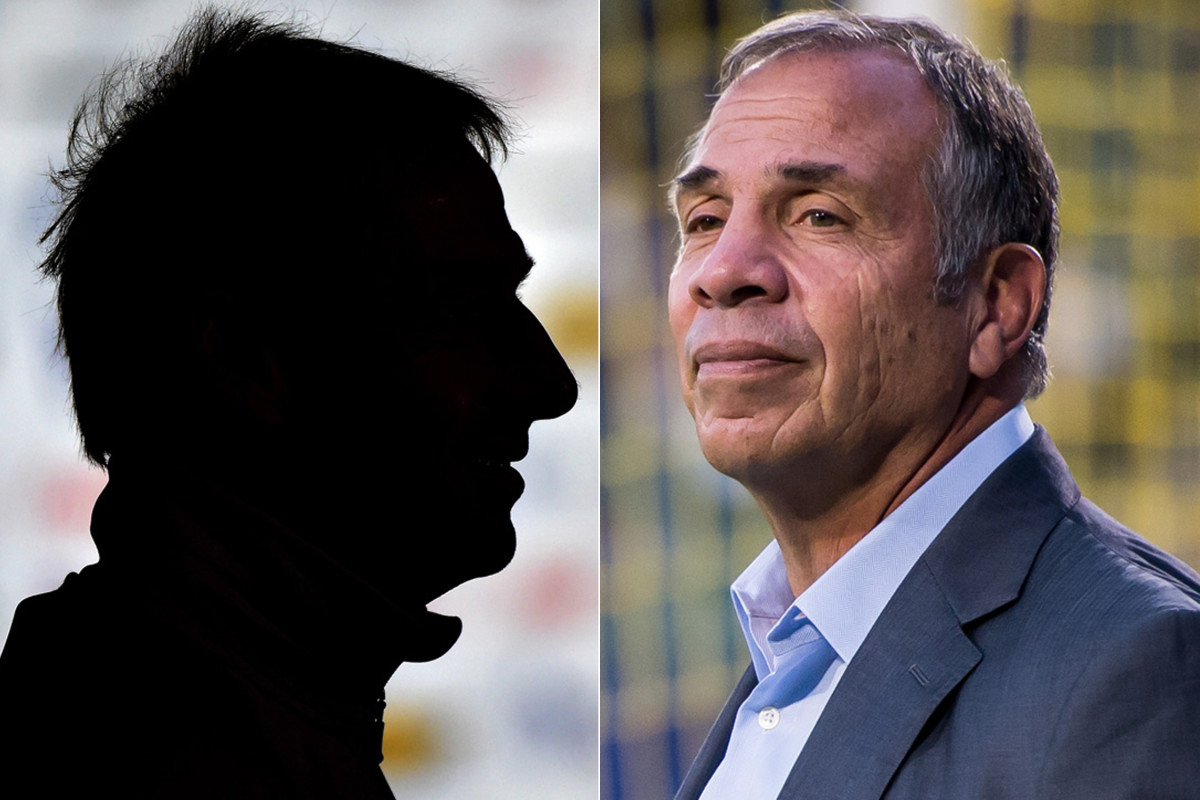
Jurgen Klinsmann was fired after the USA's World Cup qualifying loss in Costa Rica, bringing an end to more than five years in charge. He was replaced by Bruce Arena, who returns to the bench after coaching the USA from 1998-2006.
USMNT vs. Costa Rica, November 15
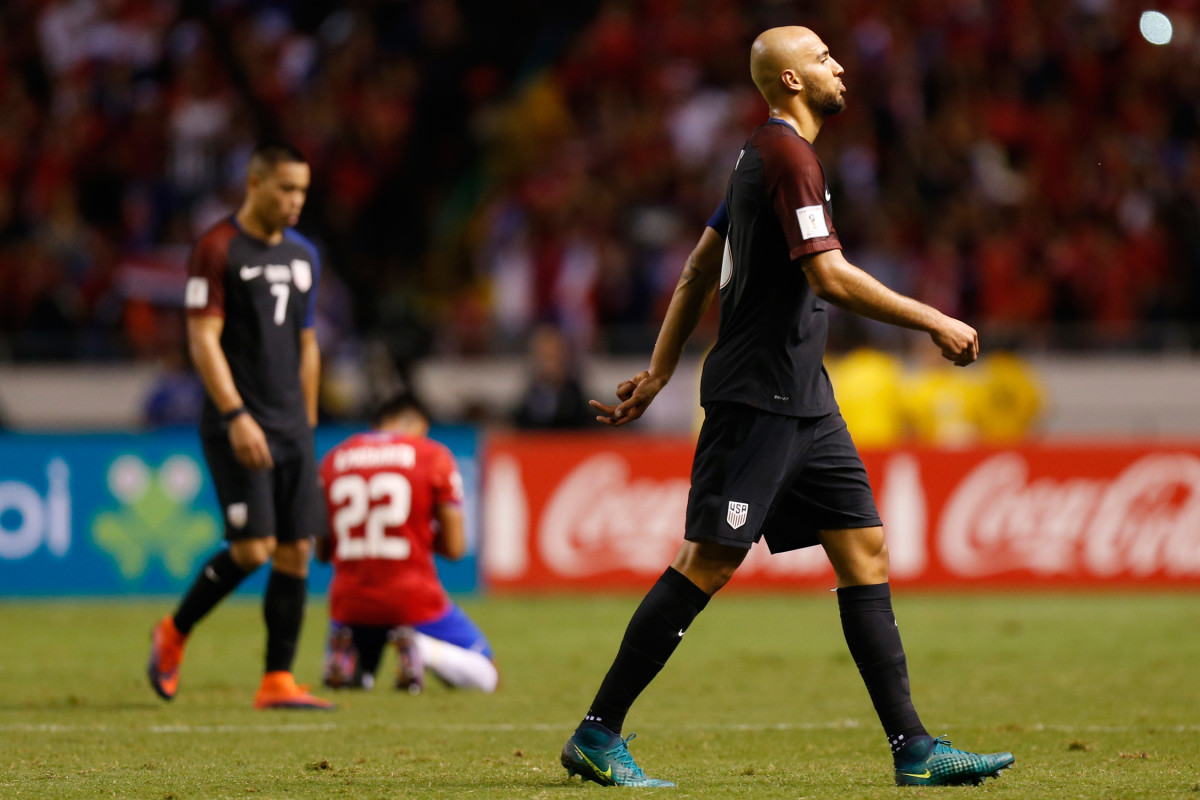
The dejected faces on Bobby Wood, left, and John Brooks say it all, as the U.S. drops to 0-2-0 in the CONCACAF World Cup qualifying Hexagonal following a 4-0 loss and embarrassment at Costa Rica.
USWNT vs. Romania, November 13
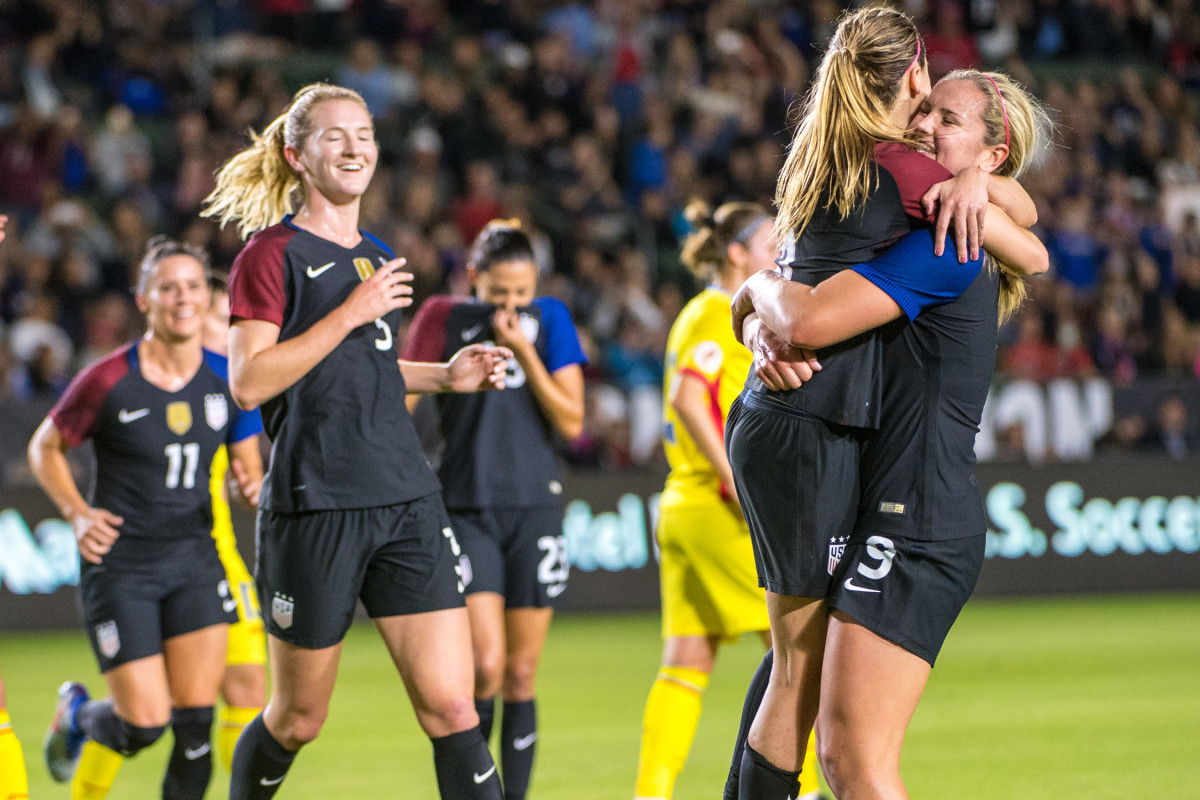
Morgan Brian gets a congratulatory hug after her converted penalty kick, which helped the U.S. women close out 2016 with a 5-0 rout of Romania at StubHub Center in Carson, California.
USMNT vs. Mexico, November 11
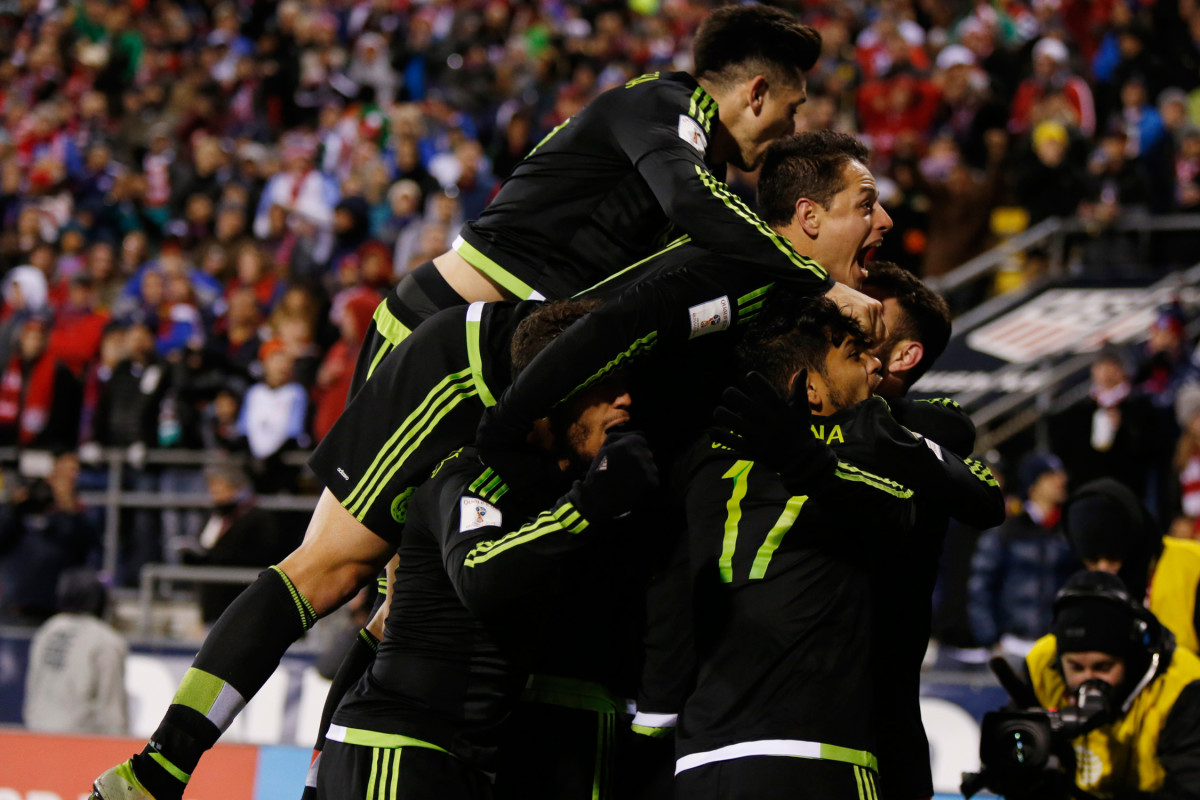
Mexico players celebrate Rafa Marquez's late winner, which delivered a 2-1 triumph for El Tri over the USA to open the CONCACAF Hexagonal. It ended years of U.S. domination over Mexico in Columbus.
USWNT vs. Romania, November 10
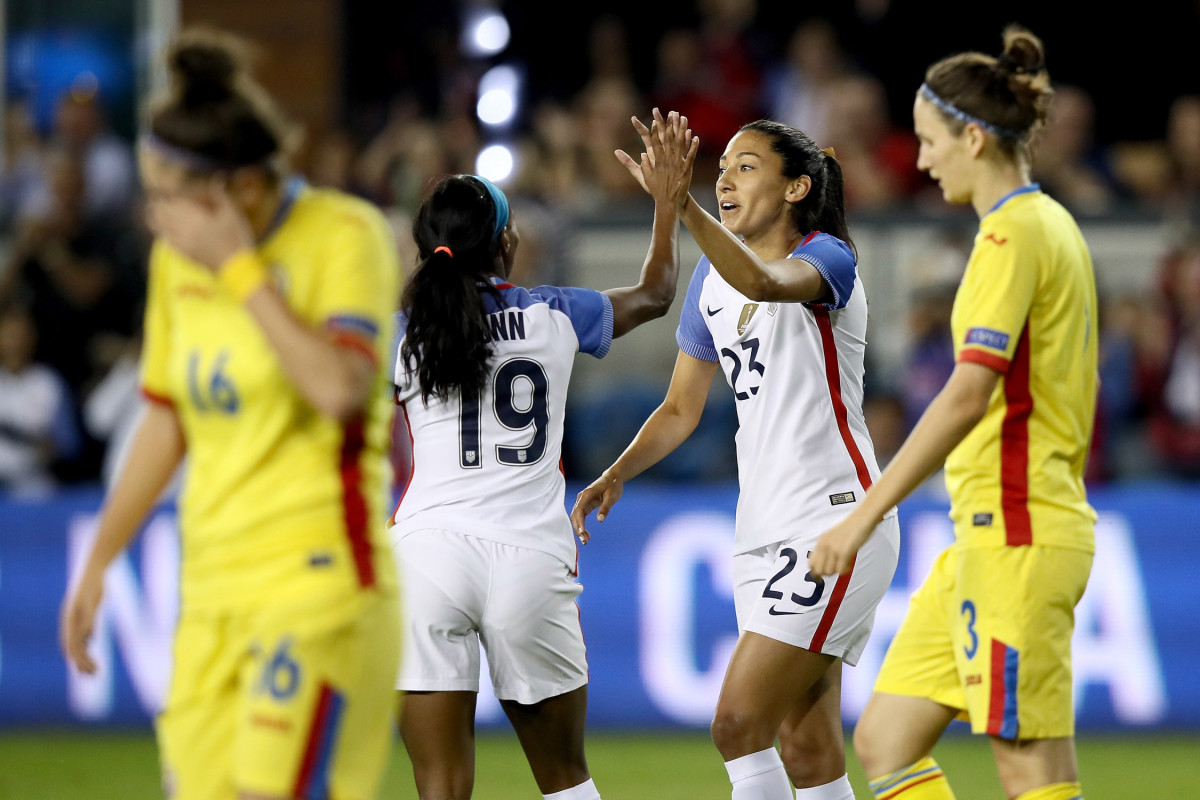
Crystal Dunn congratulates Christen Press on one of her three goals as the USA handled Romania with ease, winning 8-1 at Avaya Stadium in San Jose, California.
USWNT vs. Switzerland, October 23
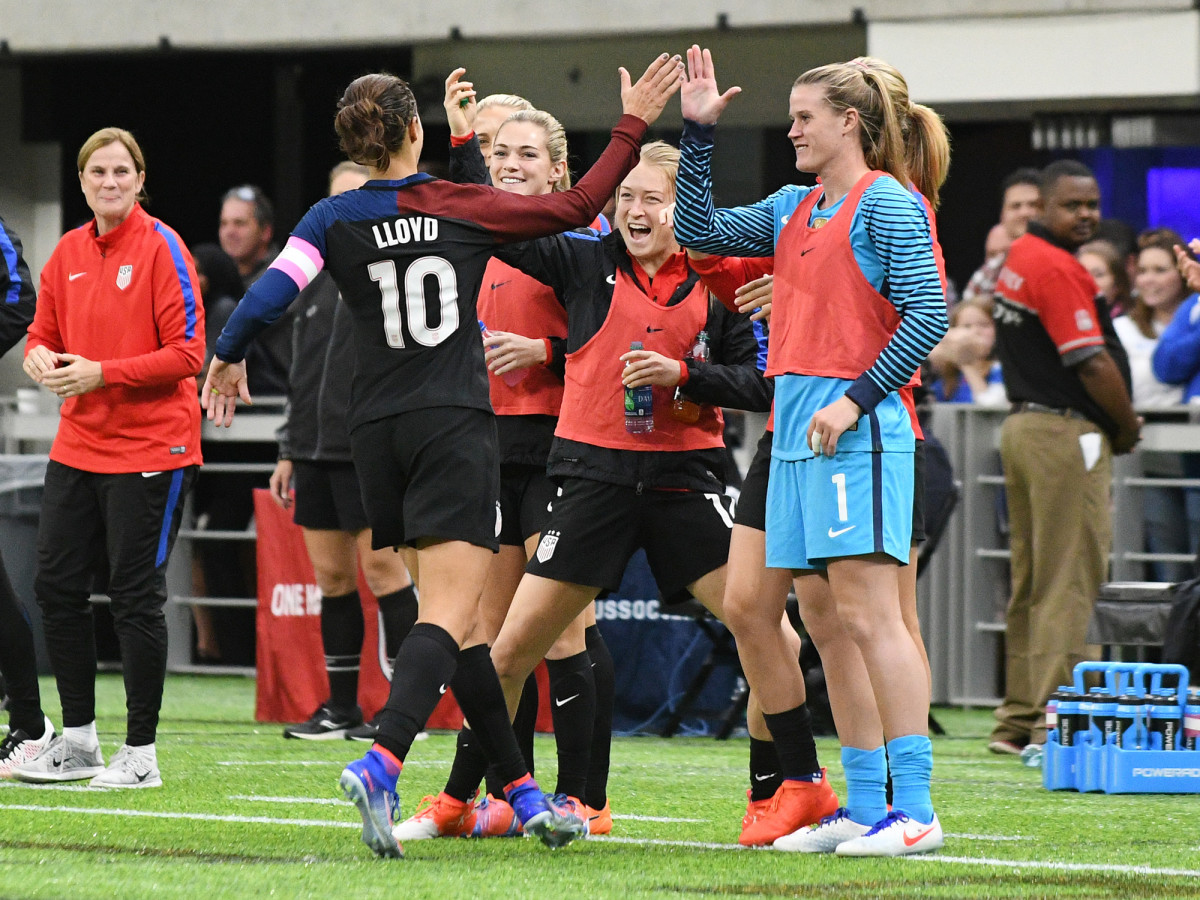
Carli Lloyd gets a hearty welcome after scoring on a long-range blast to kick-start the U.S. in a 5-1 rout of Switzerland in Minneapolis.
USWNT vs. Switzerland, October 19
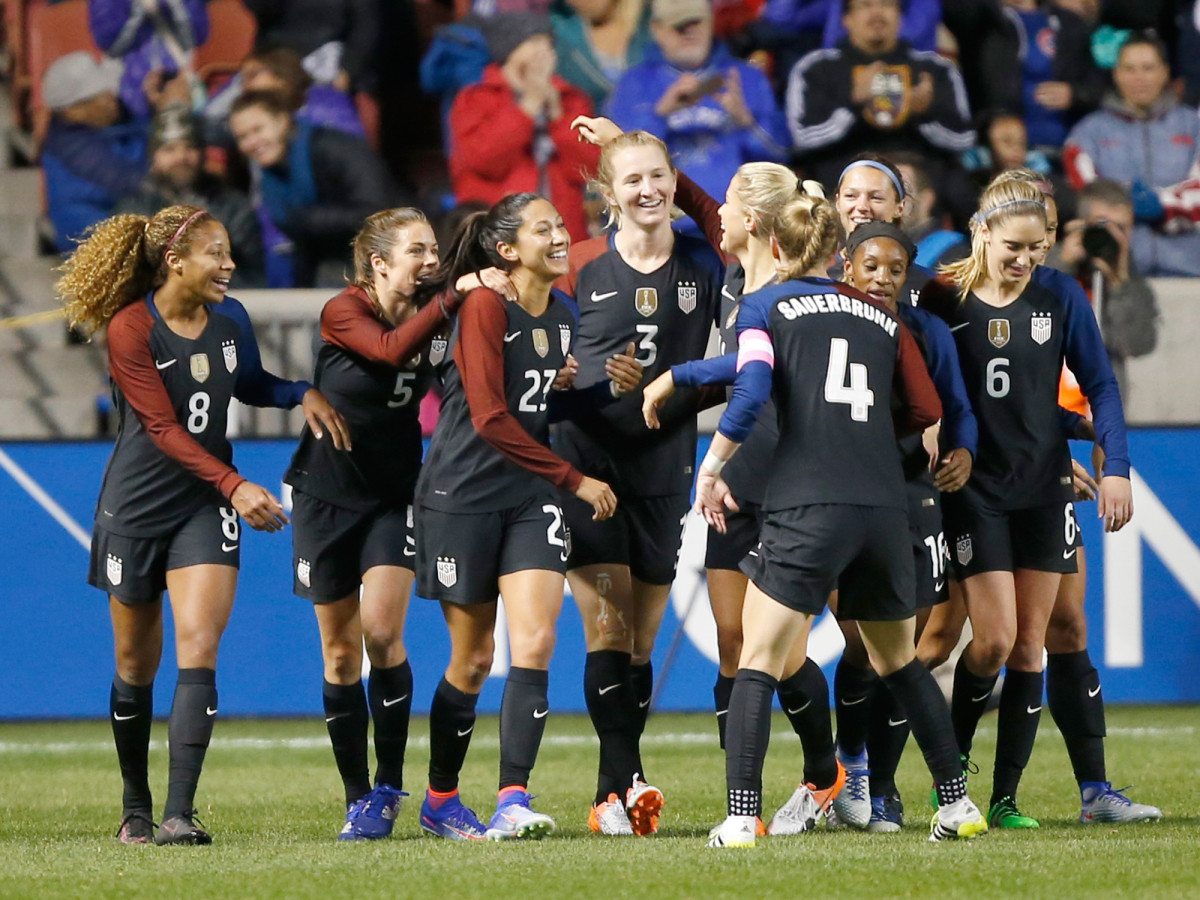
A new-look U.S. women's team routed Switzerland 4-0 at Rio Tinto Stadium in Sandy, Utah, with Samantha Mewis (3) at the center of the celebrations after scoring the final goal of four-goal second half.
USMNT vs. New Zealand, October 11
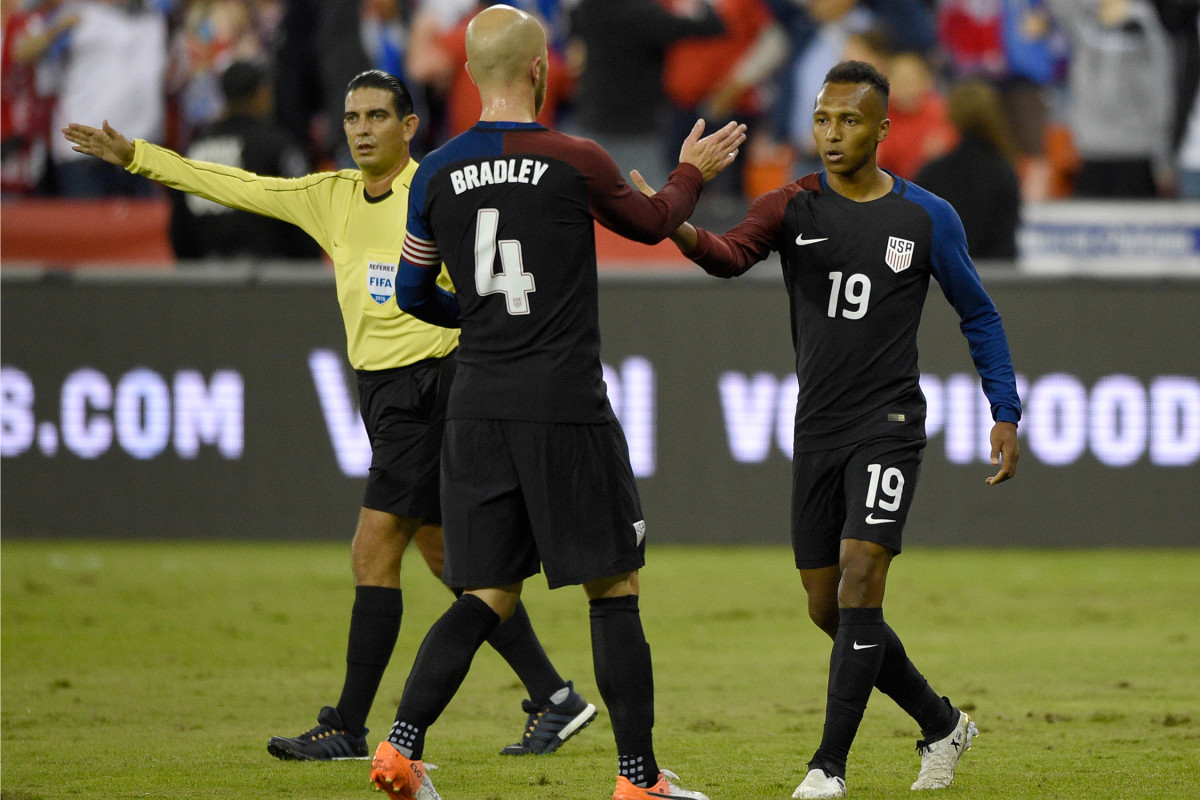
Julian Green is congratulated by captain Michael Bradley after scoring the opener, but the U.S. was forced to settle for a 1-1 draw vs. New Zealand in the last game before the CONCACAF World Cup qualifying Hexagonal kicks off.
USMNT vs. Cuba, October 7
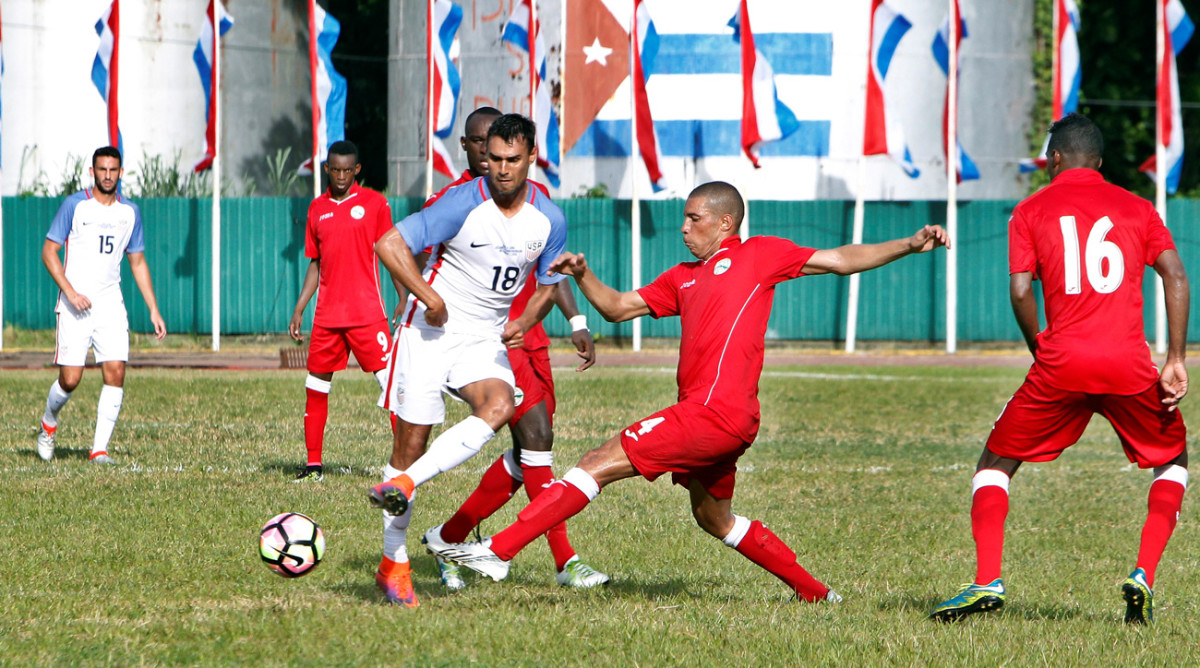
Chris Wondolowski scored a goal and assisted on another, as the USA continued World Cup qualifying preparations by beating Cuba 2-0 in a historic friendly in Havana.
USWNT vs. Netherlands, September 18
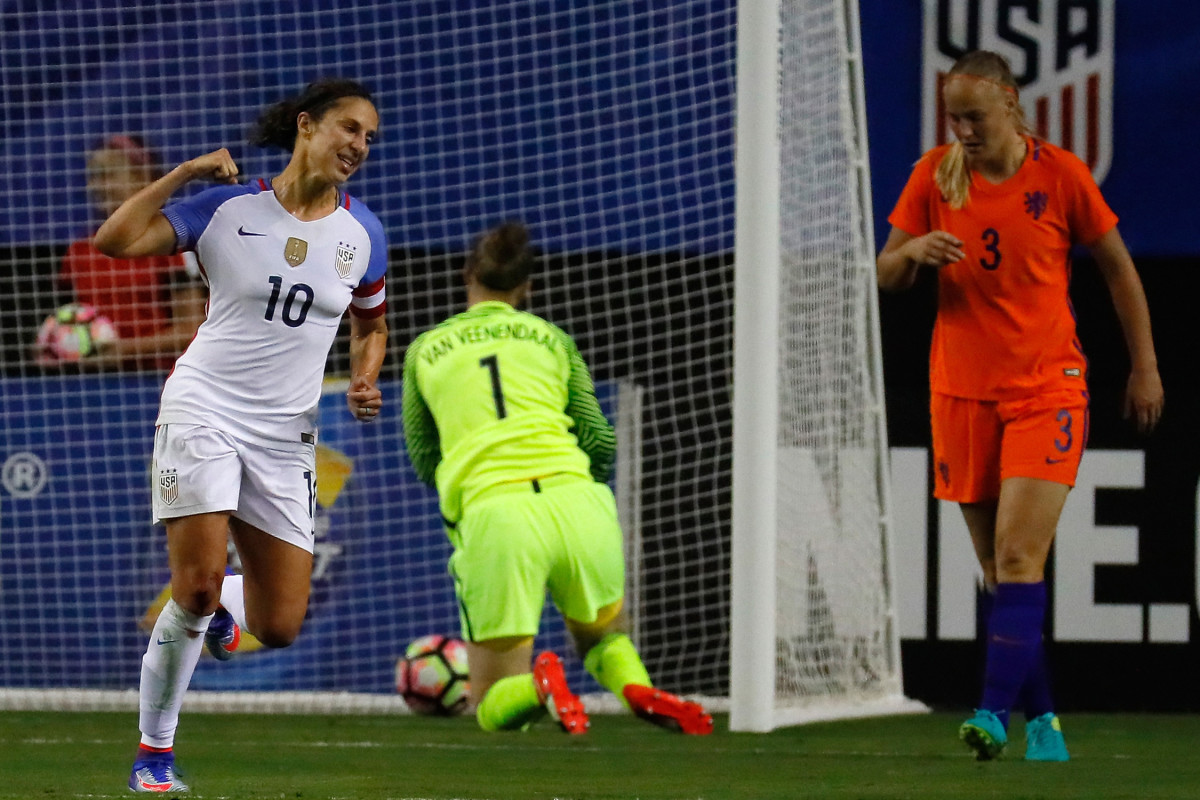
Carli Lloyd celebrates her goal that kicks off the scoring for the USA in a 3-1 win over the Netherlands at the Georgia Dome in Atlanta.
USWNT vs. Thailand, September 15
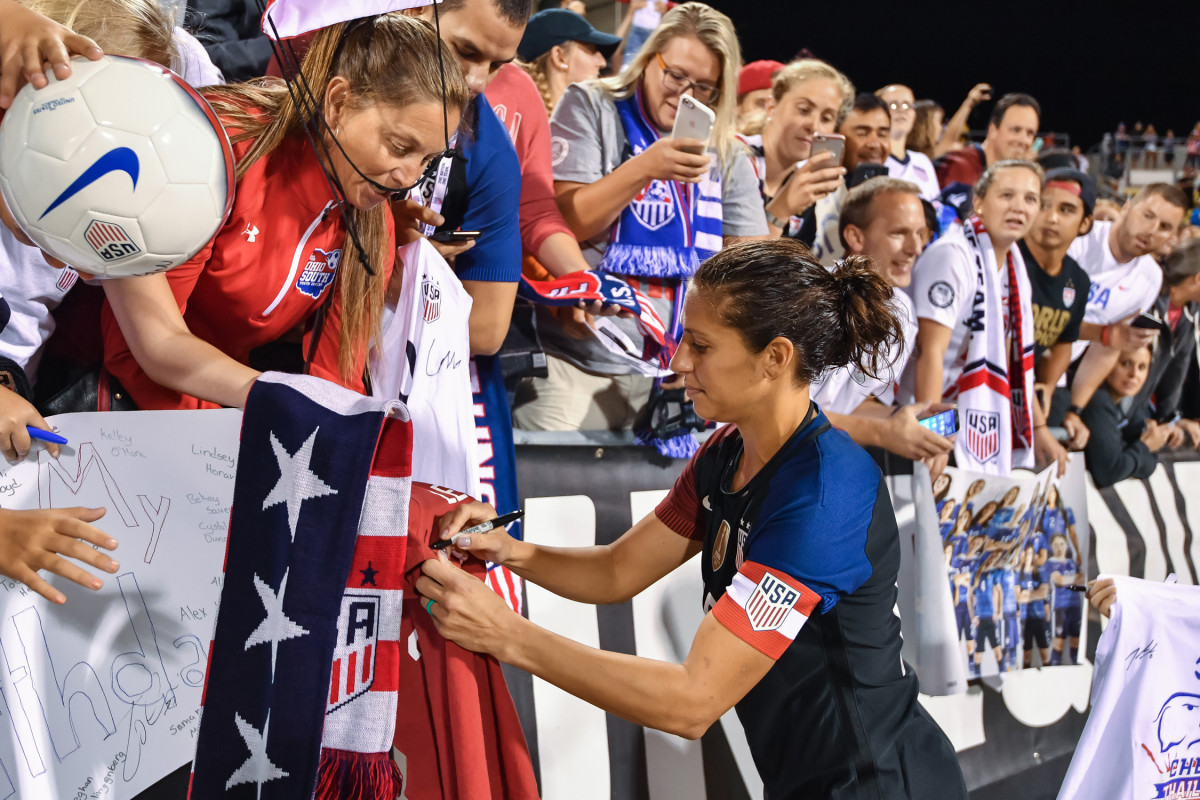
U.S. women's national team co-captain Carli Lloyd happily signs autographs after scoring a hat trick in a 9-0 romp over Thailand in Columbus, Ohio.
USWNT vs. Thailand, September 15
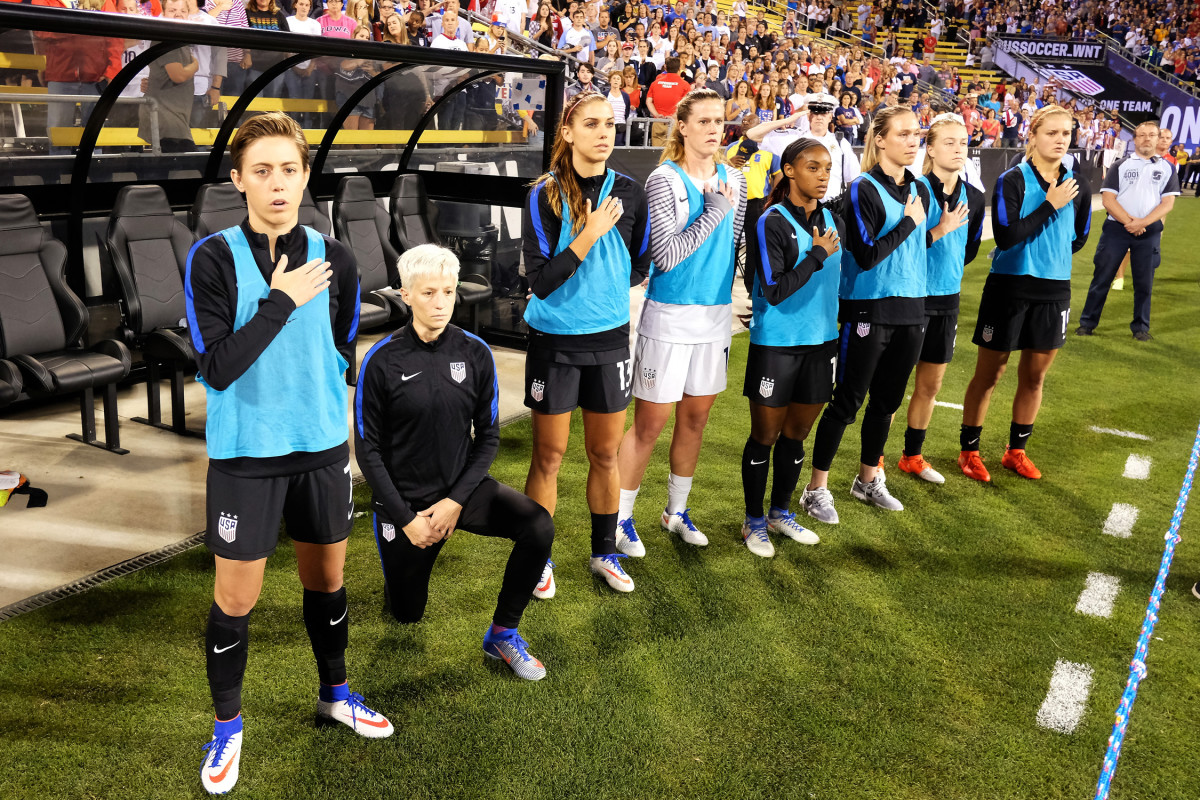
Megan Rapinoe kneels for the national anthem ahead of the U.S. women's national team's match vs. Thailand, continuing her public protest in line with that of San Francisco 49ers quarterback Colin Kaepernick.
USMNT vs. Trinidad & Tobago, September 6
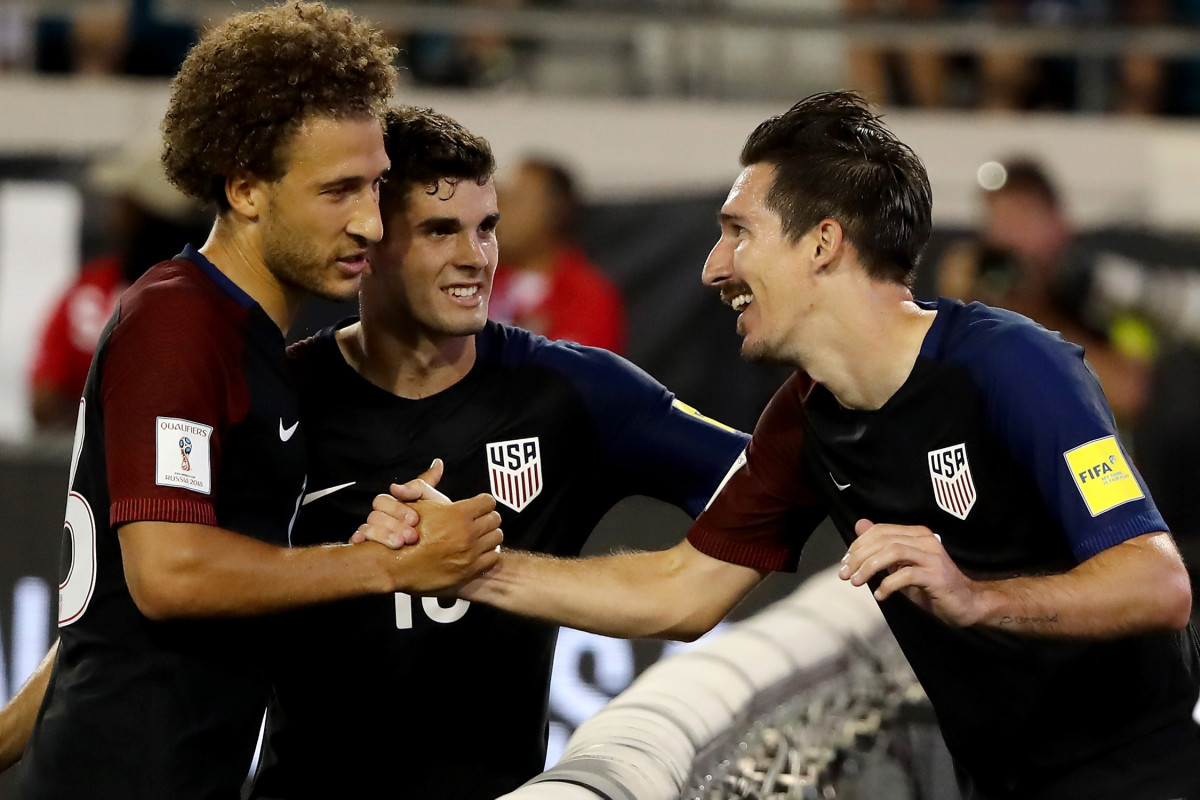
Fabian Johnson, Christian Pulisic and Sacha Kljestan celebrate during a 4-0 win, which cemented the USA's place atop its World Cup qualifying group and a berth in the CONCACAF hexagonal.
Hope Solo's USWNT contract terminated
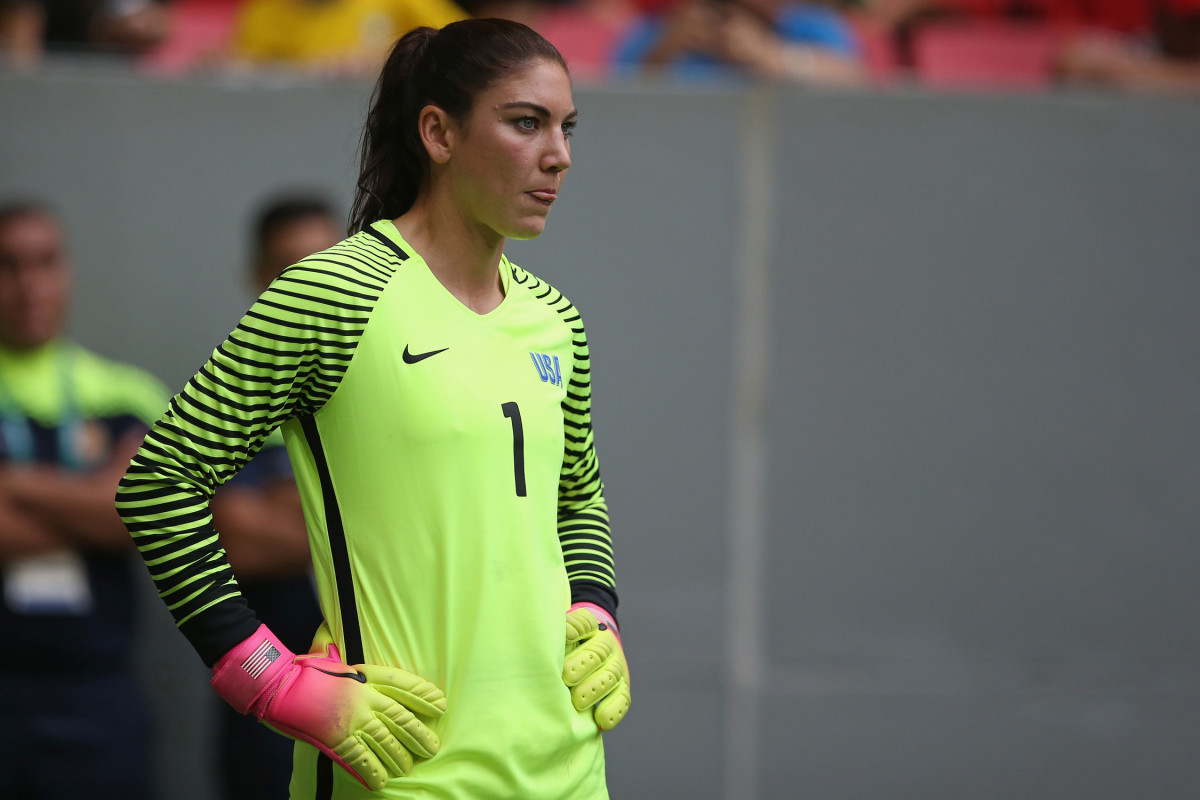
Following the USWNT's Olympic loss to Sweden, Hope Solo lashed out at the opposition, calling them "cowards" and drawing the ire of U.S. Soccer. The incident pushed the federation over the edge, and it terminated the goalkeeper's contract while suspending her six months–meaning any chance at reinstatement won't be possible until February.
USWNT vs. Sweden, August 12
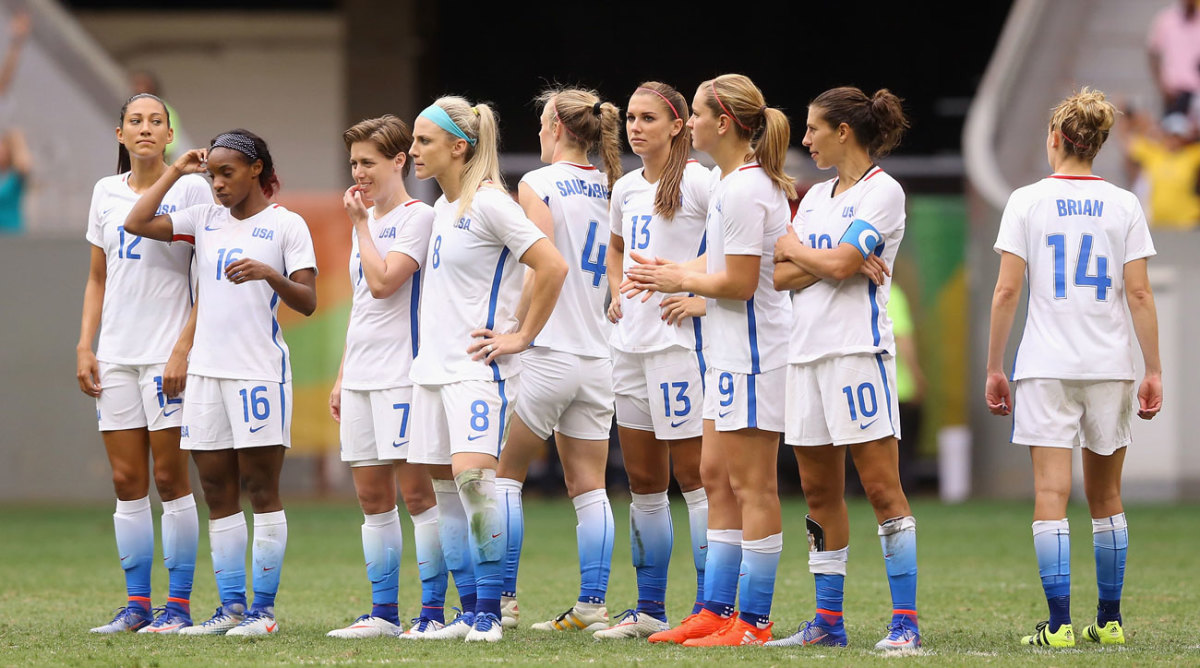
The long and stunned faces say it all, as the U.S. women try to comprehend a penalty-kick loss to Sweden in the Olympic quarterfinals. The 4-3 PK defeat after a 1-1 draw marked the earliest ouster for the U.S. women in a major competition ever.
USWNT vs. Colombia, August 9
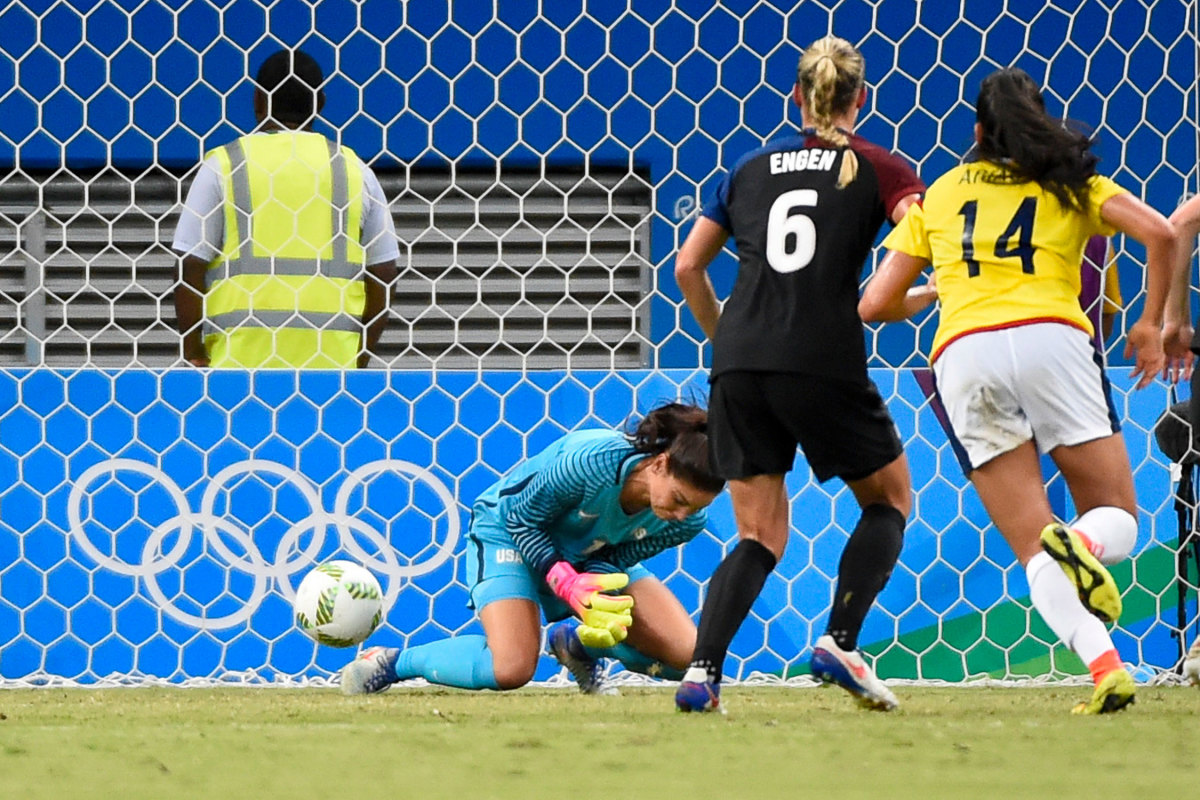
Hope Solo lets a Catalina Usme free kick slip through her hands and legs in a shocking 2-2 draw. The USA still won its Olympic group despite the slip-up.
USWNT vs. France, August 6
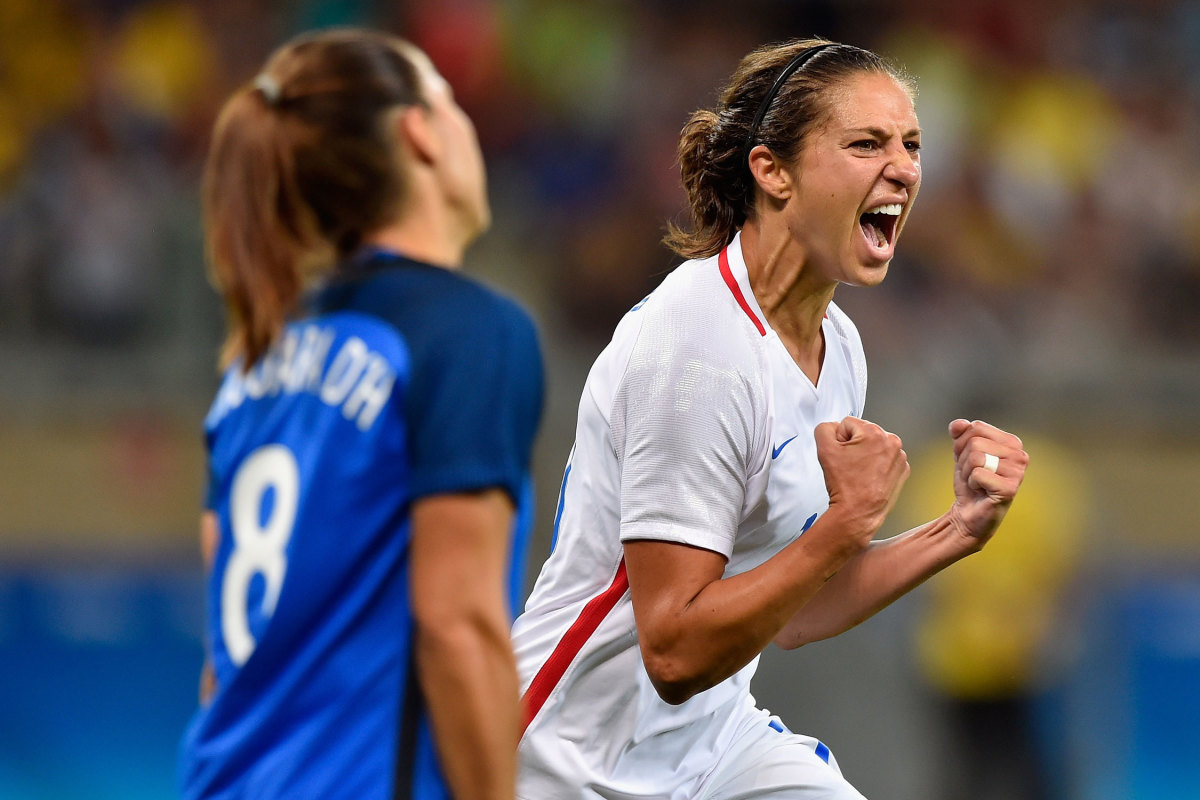
Carli Lloyd scores the only goal in a 1-0 win over a stout France side to punch the USA's ticket to the knockout stage at the Olympics.
USWNT vs. New Zealand, August 3

Carli Lloyd celebrates her goal in the USA's 2-0 win over New Zealand in their opening match of group play at the Olympics. Alex Morgan doubled the USA's lead in the second half.
USWNT vs. Costa Rica, July 22
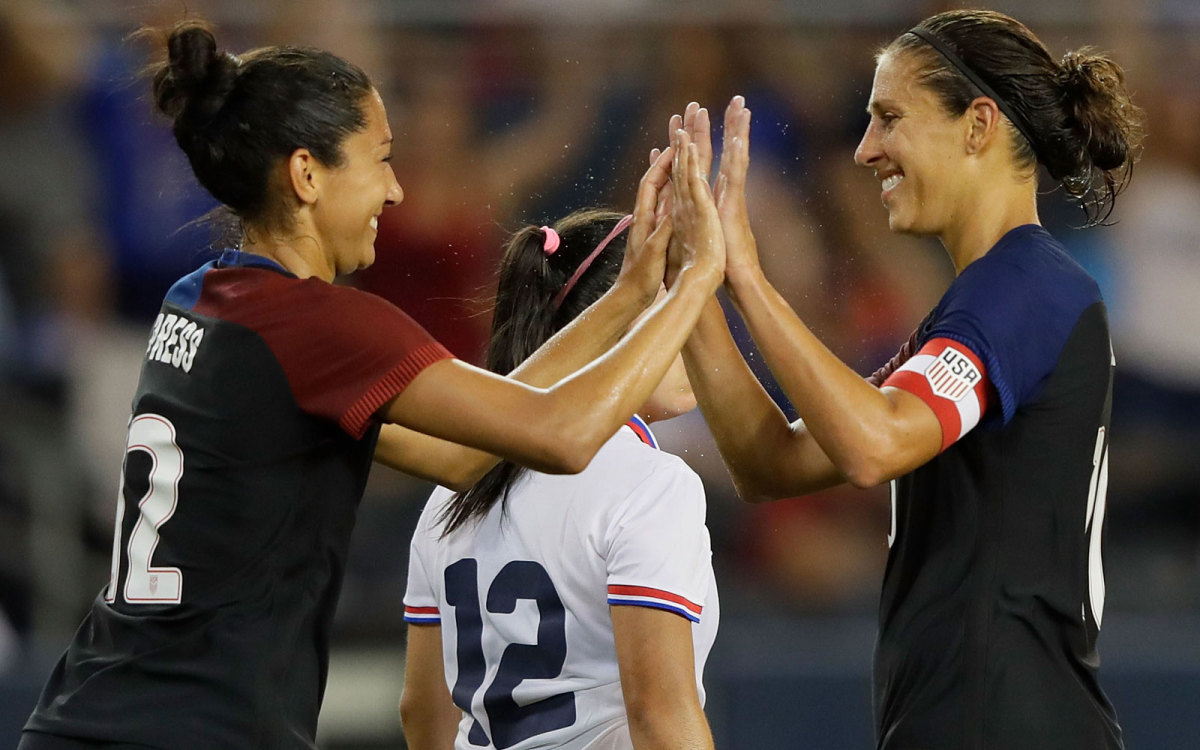
Christen Press and Carli Lloyd celebrate an easy 4-0 win, which sent the U.S. on its way to Rio with an unbeaten record in 2016.
USWNT vs. South Africa, July 9
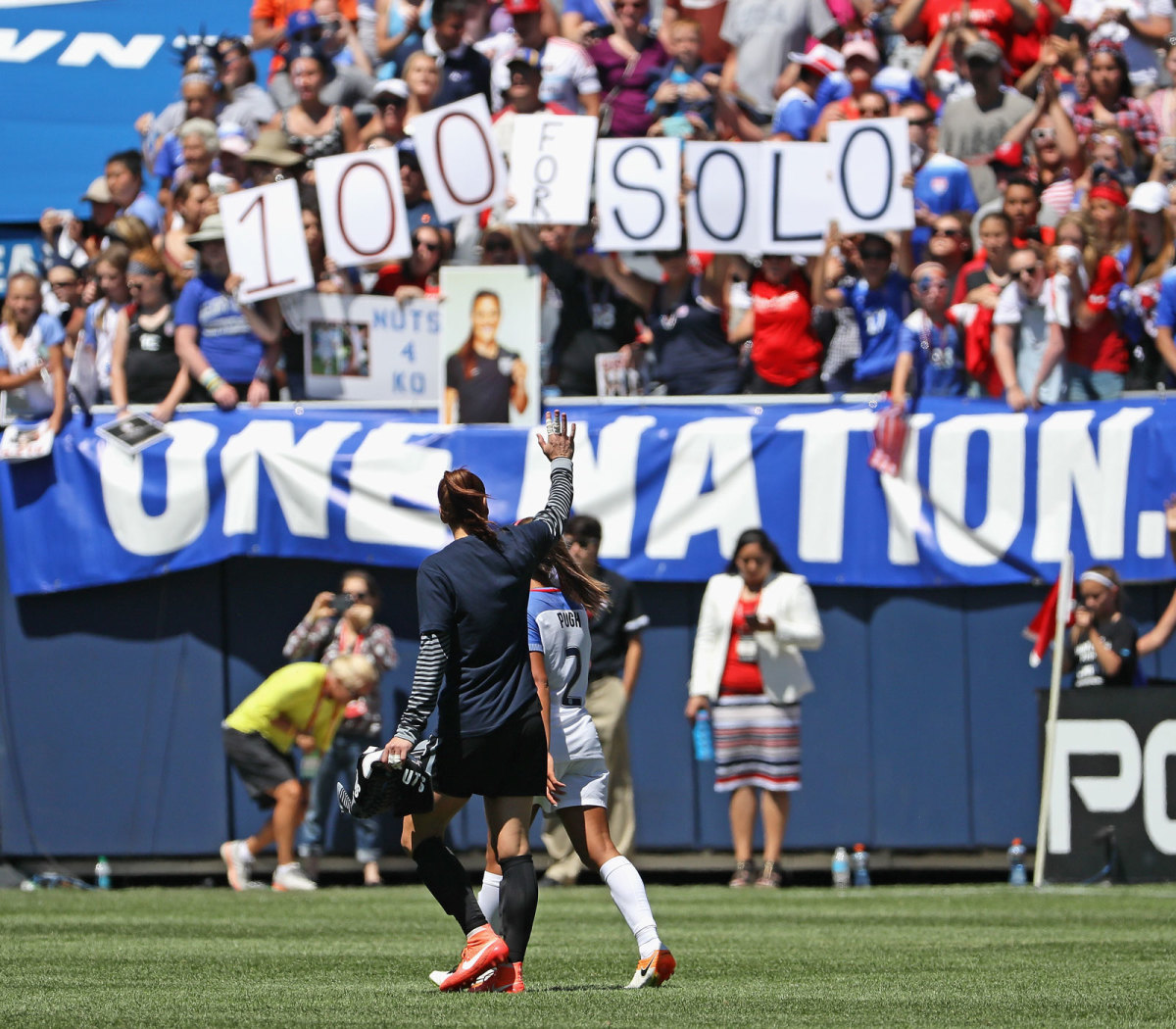
Hope Solo salutes the crowd after posting the 100th clean sheet of her career in a 1-0 win in Chicago. Crystal Dunn scored the lone goal.
USMNT vs. Colombia, June 25
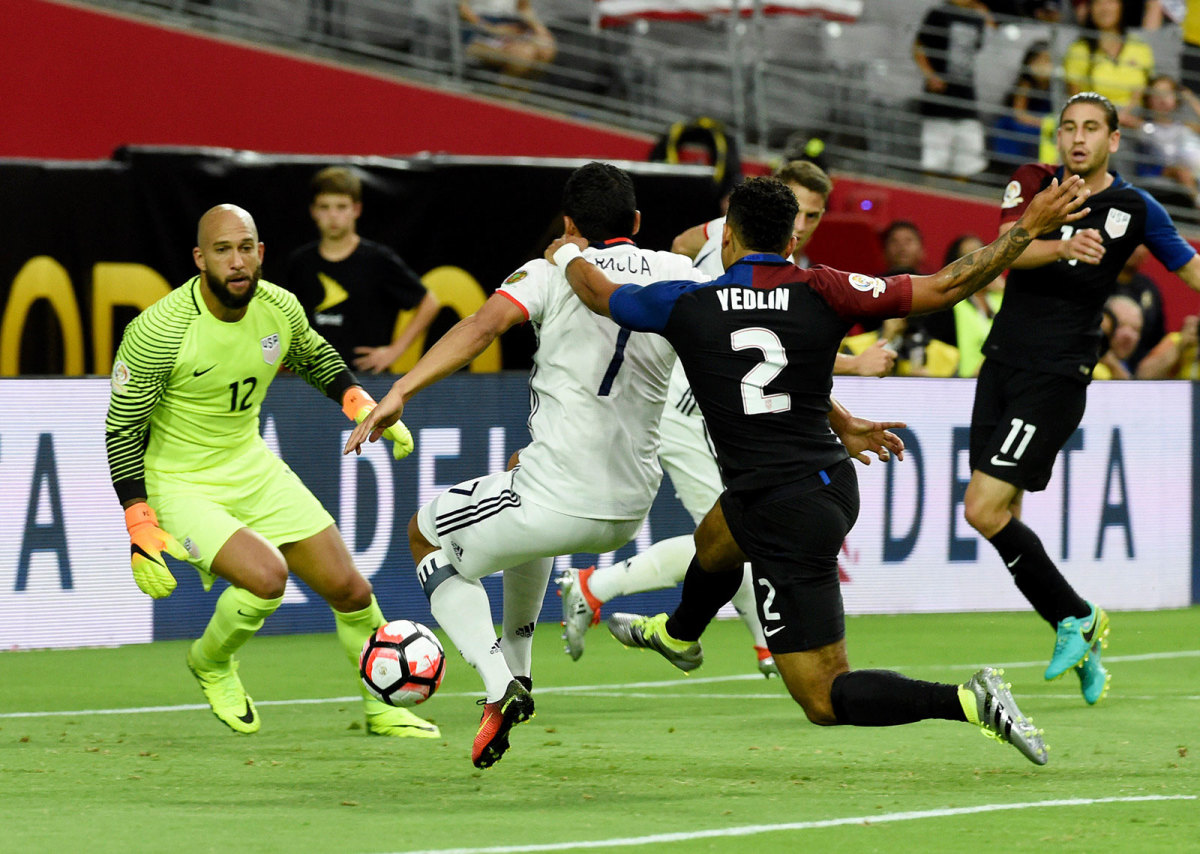
For a second time at Copa America, the USA falls to Colombia, with Carlos Bacca's goal the difference in a 1-0 result in the third-place match in Arizona.
USMNT vs. Argentina, June 21
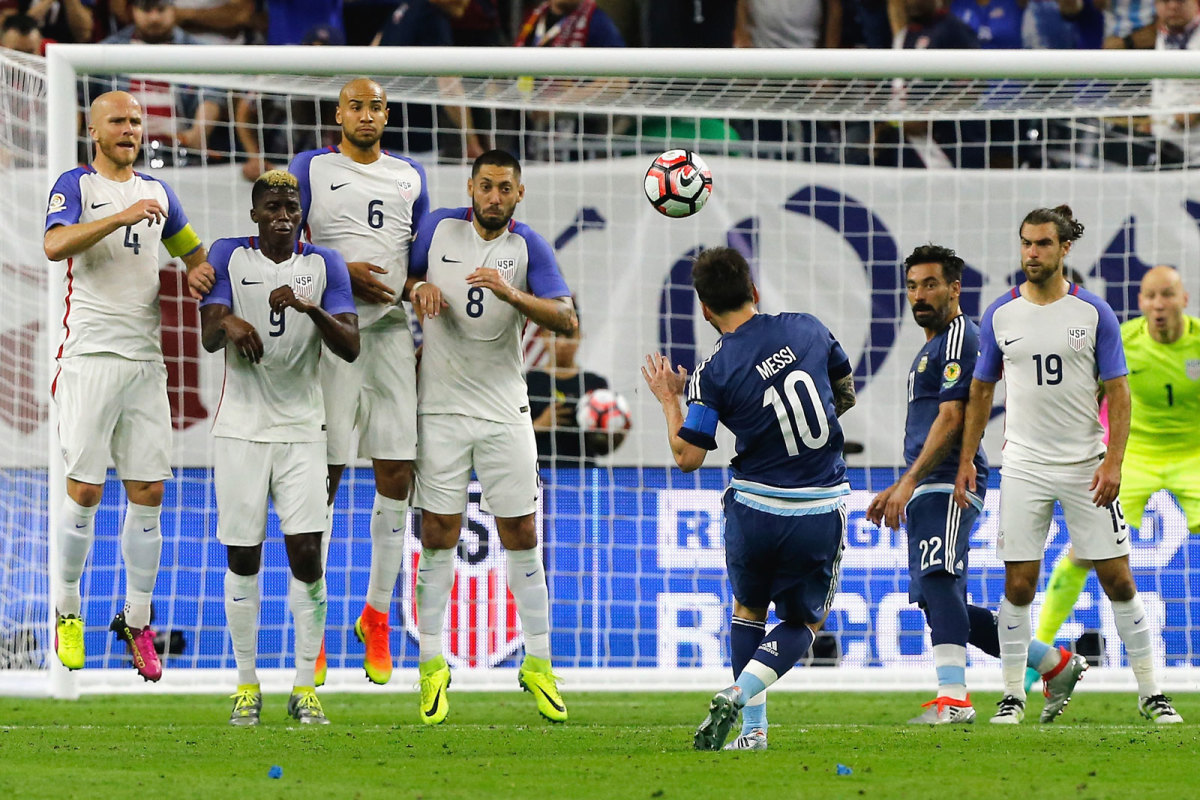
Lionel Messi converts an incredible free kick to punctuate a dominant performance for Argentina against the USA in the Copa America semifinals.
USMNT vs. Ecuador, June 16
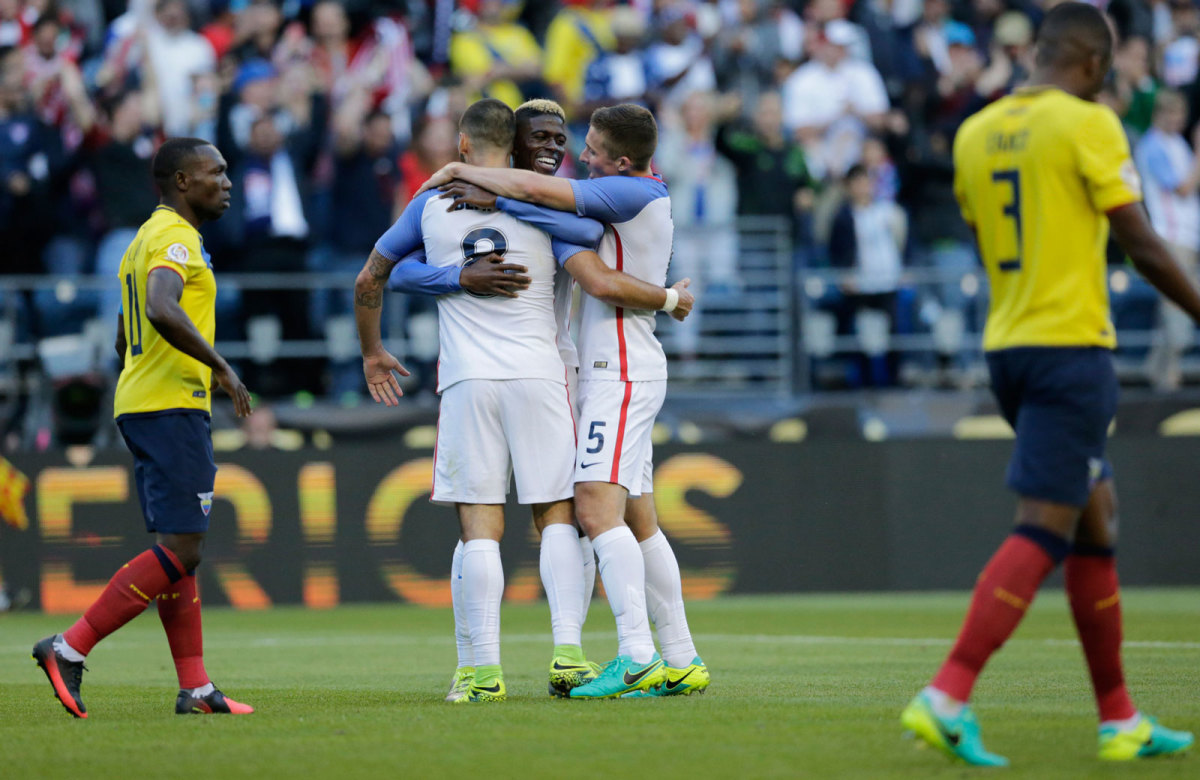
Goal scorers Clint Dempsey and Gyasi Zardes share a celebratory hug with Matt Besler in the Copa America quarterfinals, where the Americans held on for a 2-1 win and a place in the semis.
USMNT vs. Paraguay, June 11
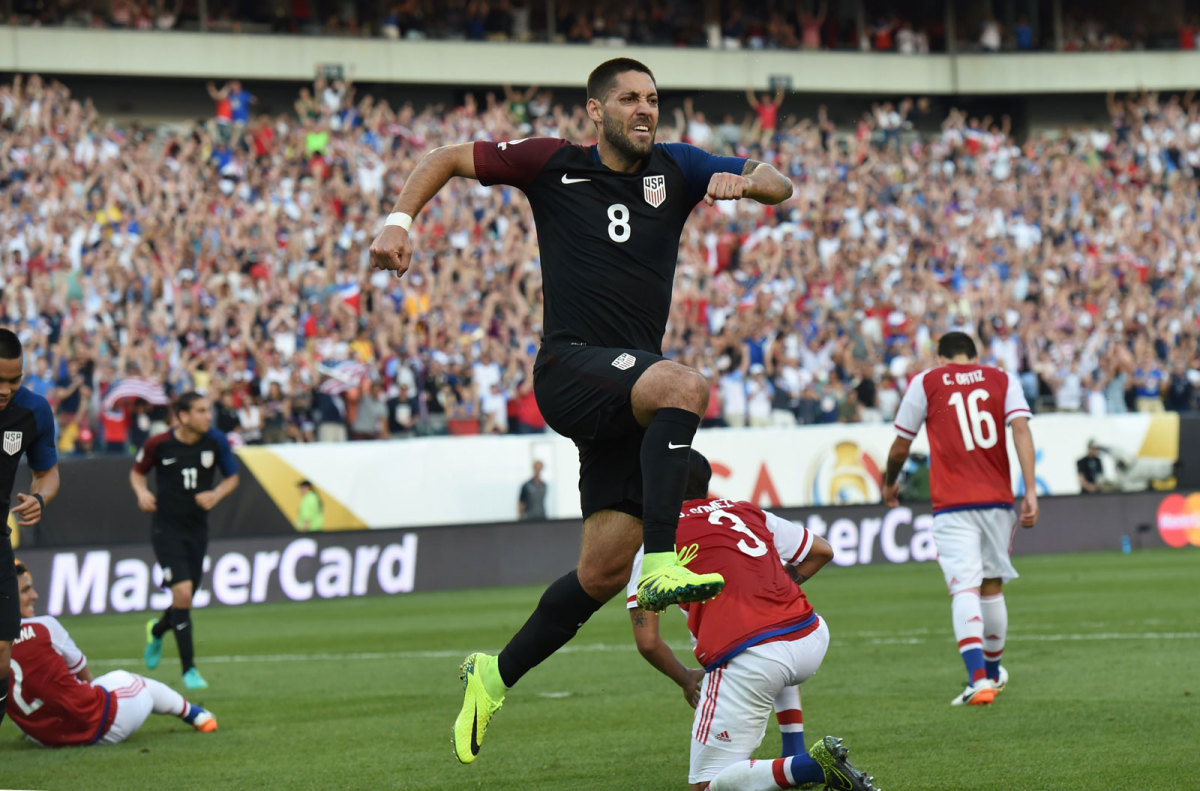
Clint Dempsey celebrates his goal in a 1-0 win over Paraguay, which secured the USA's place in the Copa America knockout stage.
USMNT vs. Costa Rica, June 7
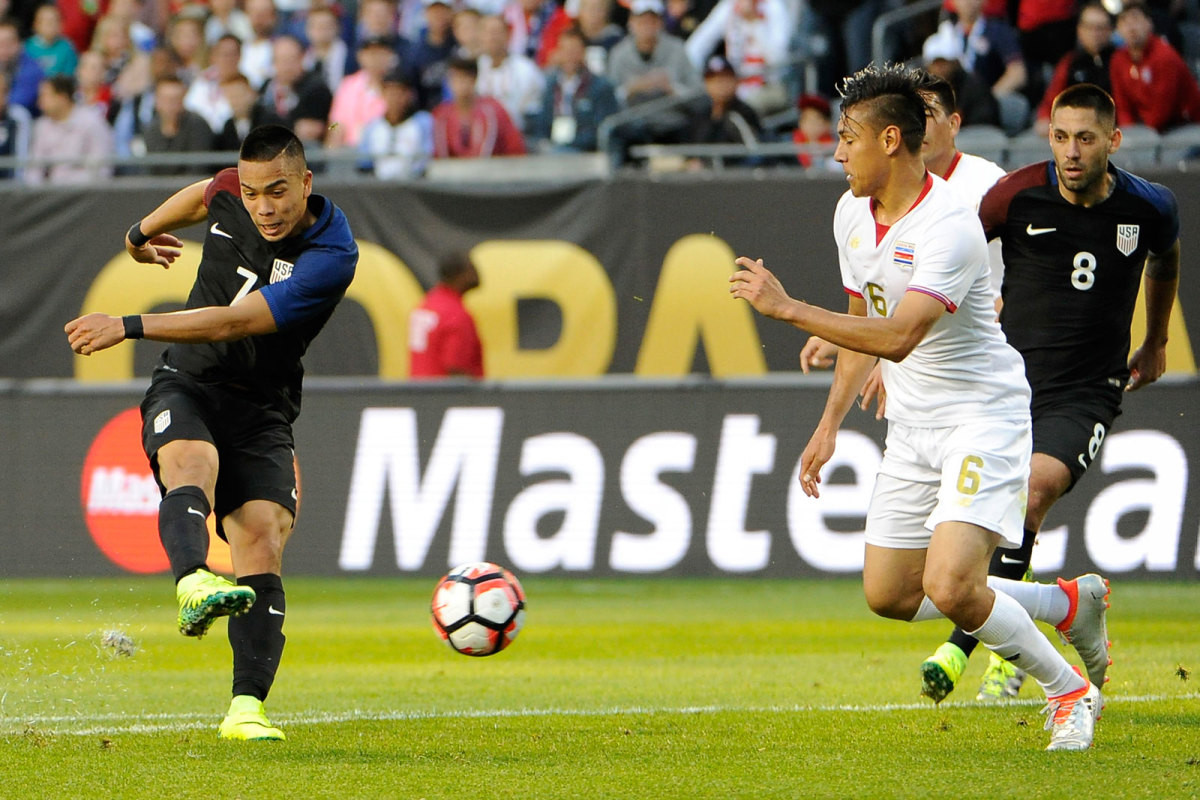
Bobby Wood caps a dominating first half for the USA in a must-win game vs. Costa Rica in Chicago at Copa America. Clint Dempsey, Jermaine Jones and Graham Zusi also scored.
USWNT vs. Japan, June 5
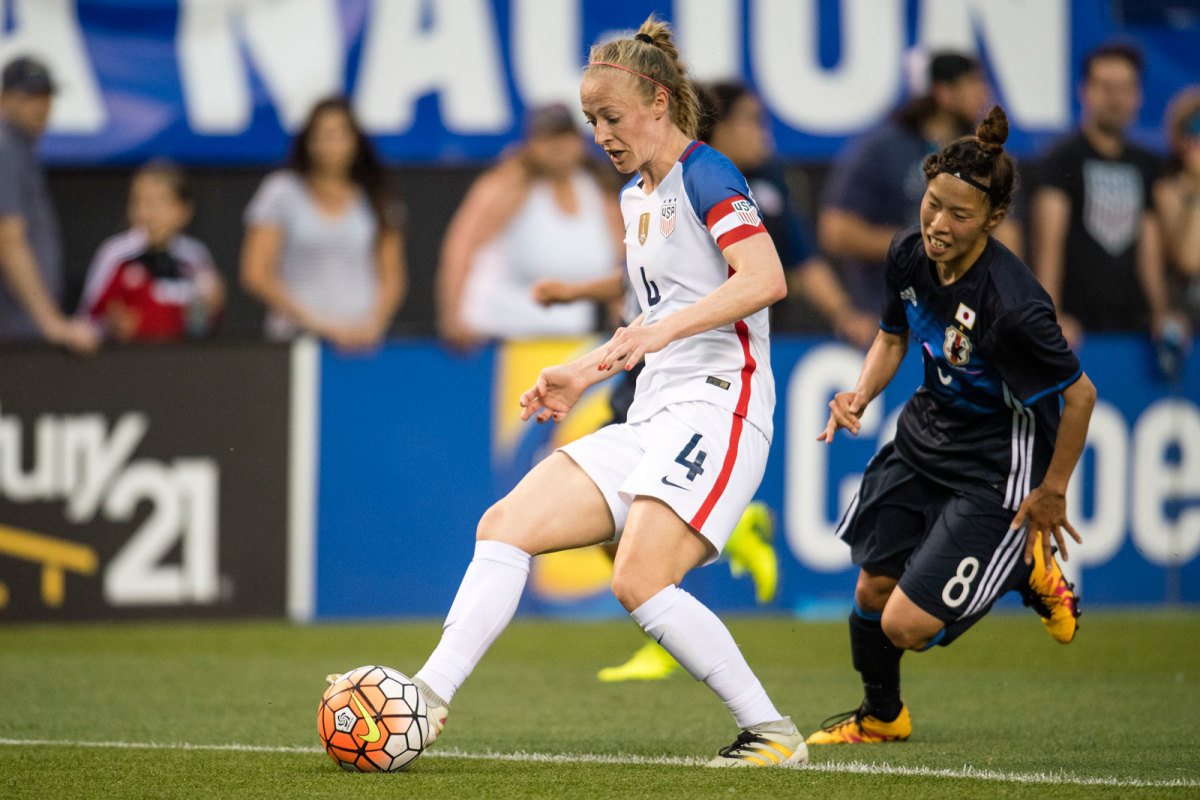
Co-captain Becky Sauerbrunn defends as the U.S. bounces back to shut out Japan 2-0 in a rain-shortened friendly in Cleveland.
USMNT vs. Colombia, June 3
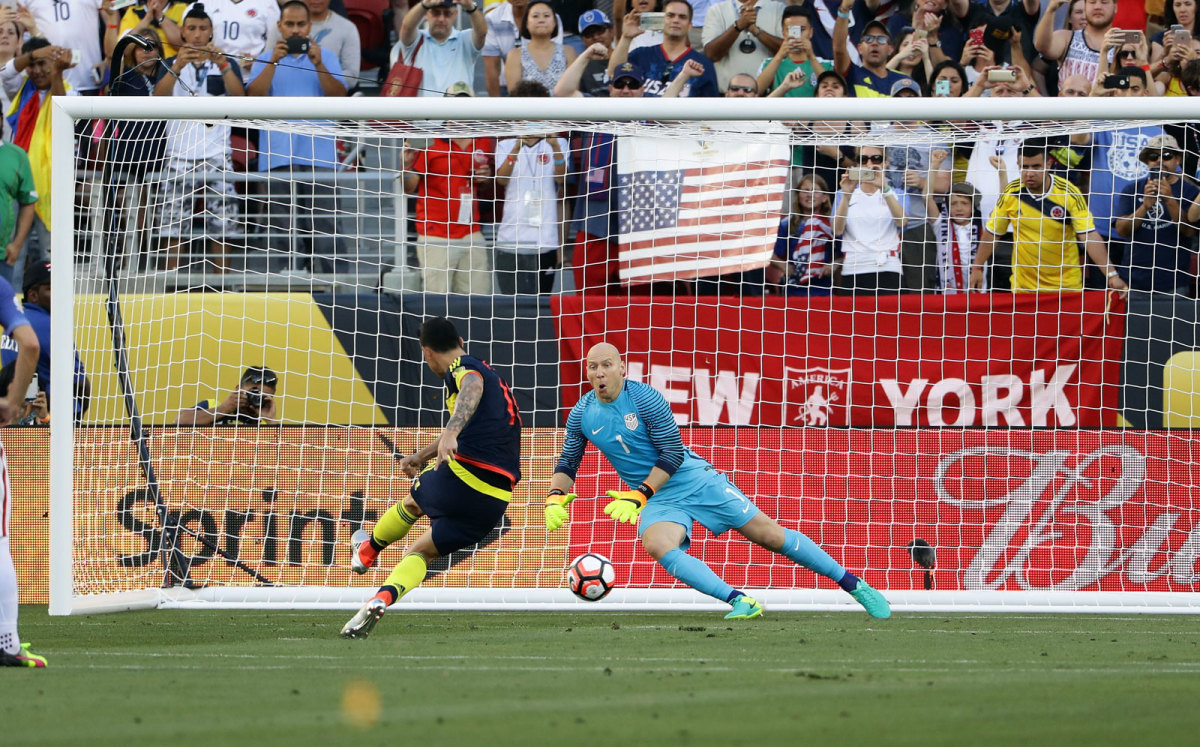
James Rodriguez beats Brad Guzan from the penalty spot in Colombia's 2-0 win over the USA to open Copa America Centenario.
USWNT vs. Japan, June 2
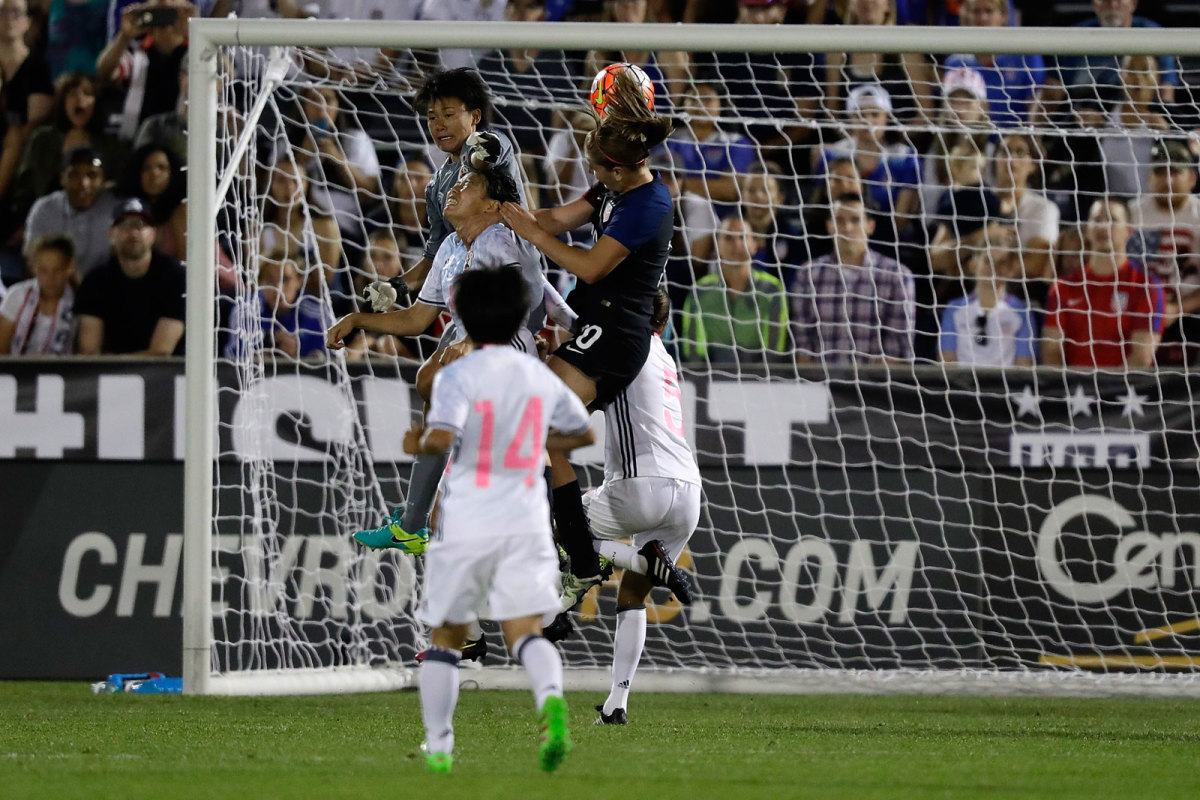
Lindsey Horan heads the USA in front to cap a comeback from two goals down, but the Americans conceded in extra time to 10-woman Japan, settling for a 3-3 draw.
USMNT vs. Bolivia, May 29
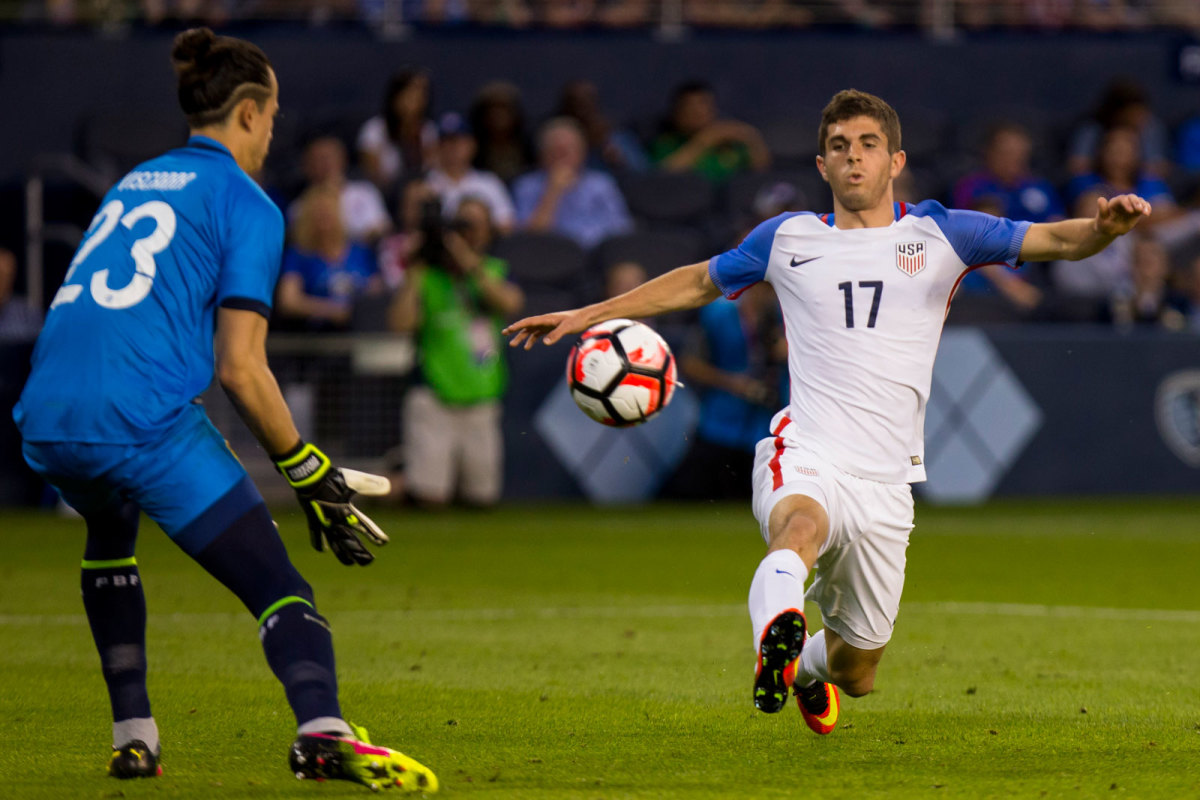
Christian Pulisic scores his first international goal in the USA's 4-0 win over Bolivia in a final tune-up for Copa America. Gyasi Zardes scored twice, and John Brooks added one of his own in the triumph.
USMNT vs. Ecuador, May 25
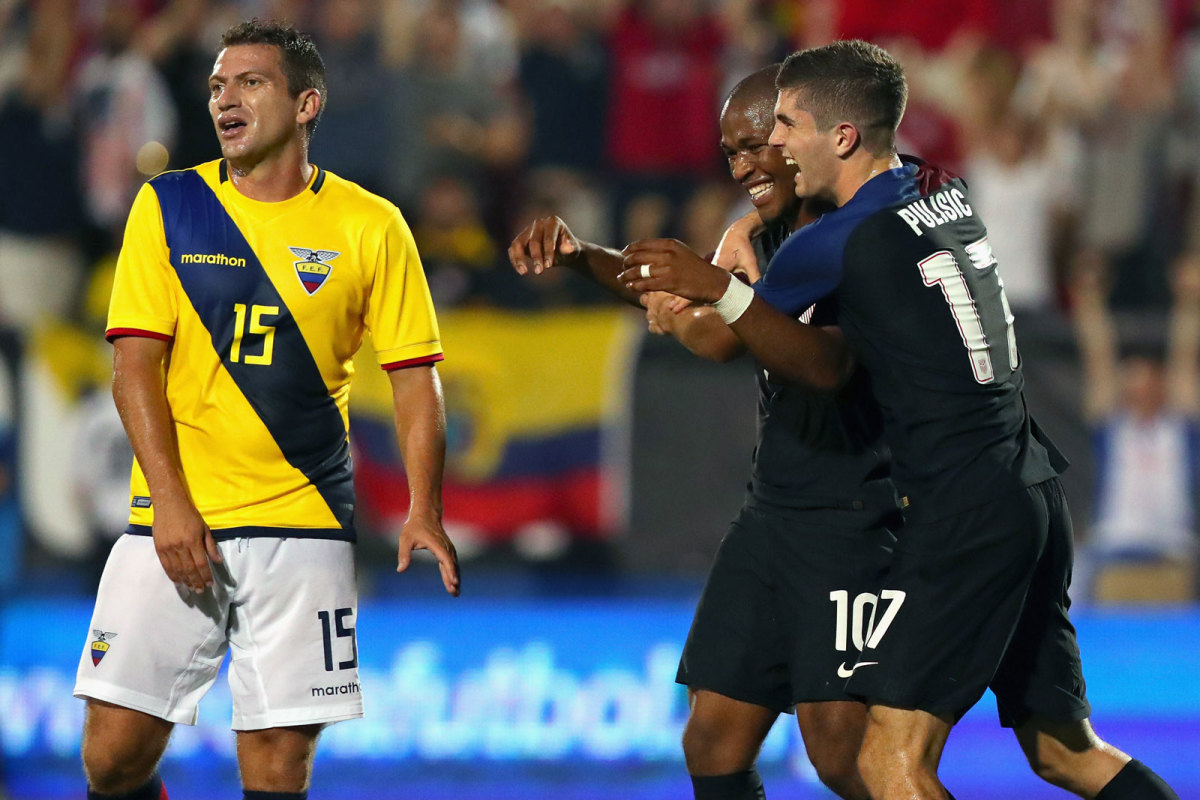
Darlington Nagbe is hugged by Christian Pulisic after his 90th-minute volley delivers a 1-0 victory for the USA in a pre-Copa America friendly.
USMNT vs. Puerto Rico, May 22
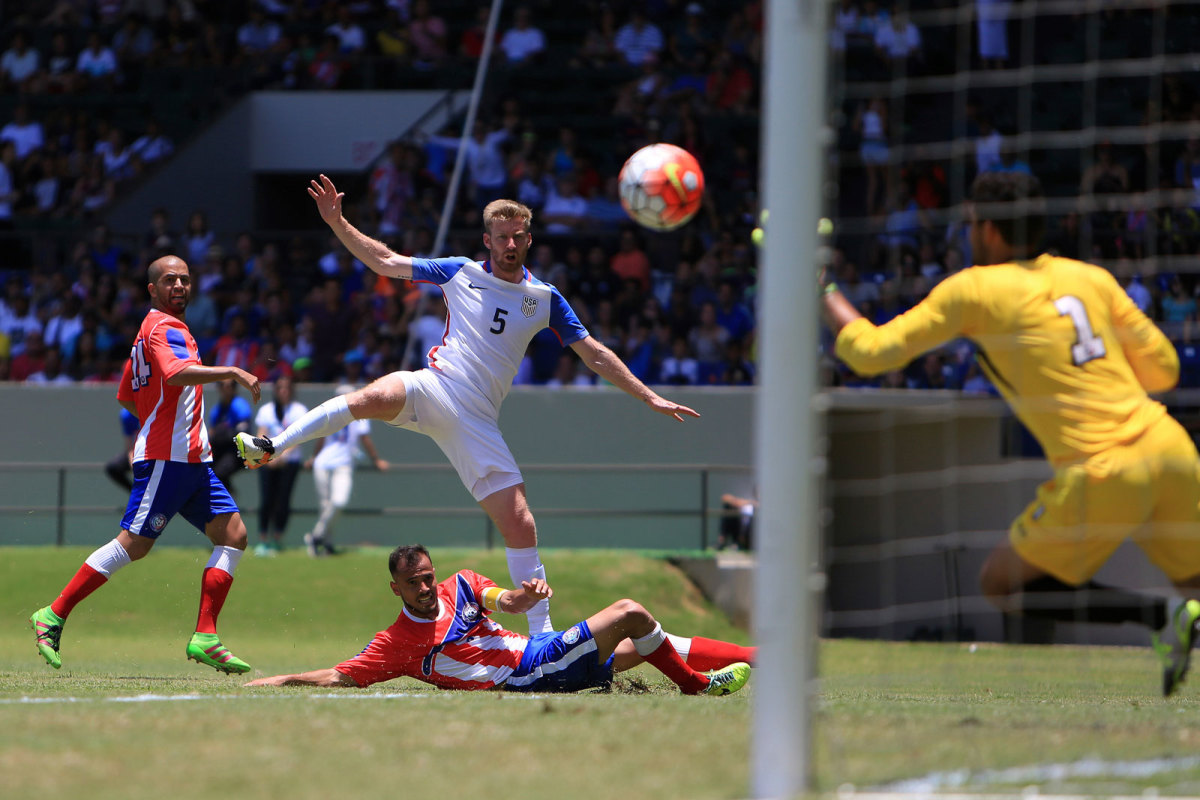
Tim Ream scores the opening goal in the USA's 3-0 win over Puerto Rico in the first meeting between the two sides. Bobby Wood and Paul Arriola scored as well.
USWNT vs. Colombia, April 10
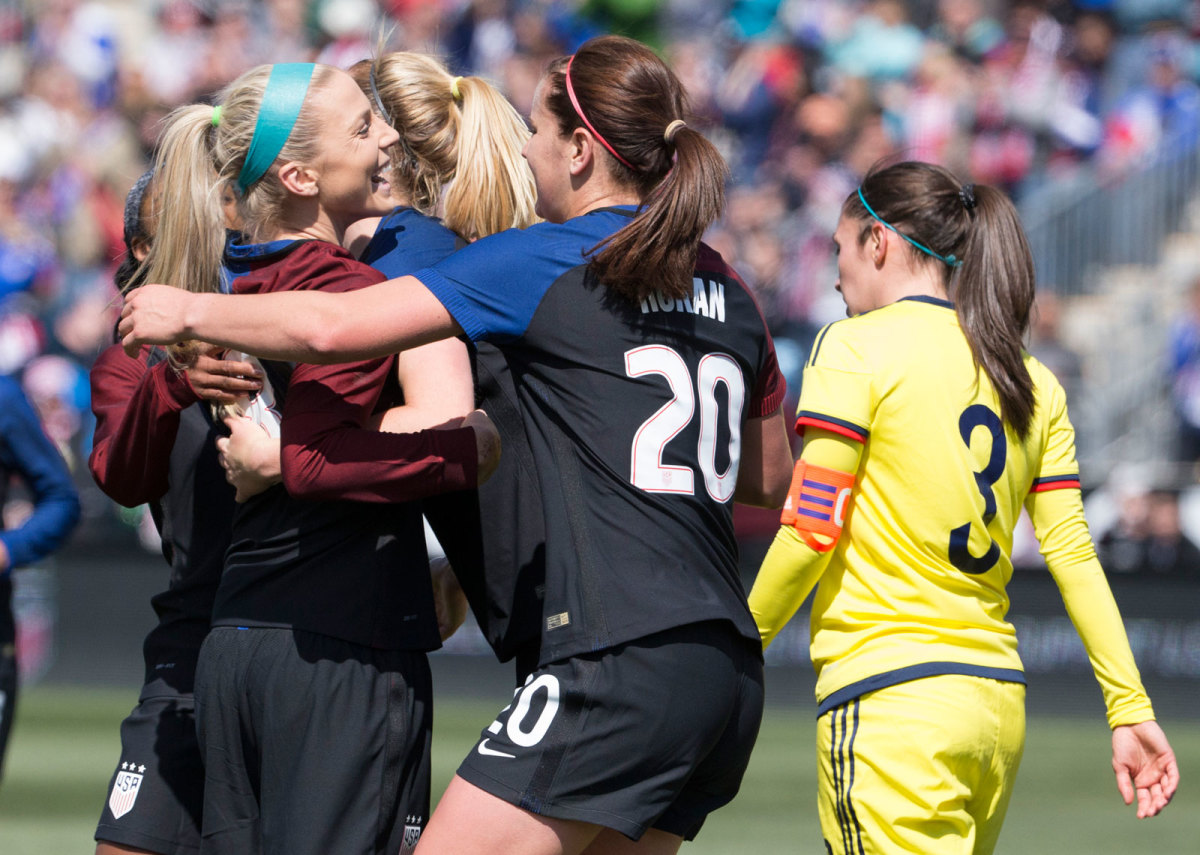
Julie Johnston, left, is mobbed after one of her two goals in a 3-0 USA win at Talen Energy Stadium in Chester, Pennsylvania.
USWNT vs. Colombia, April 6
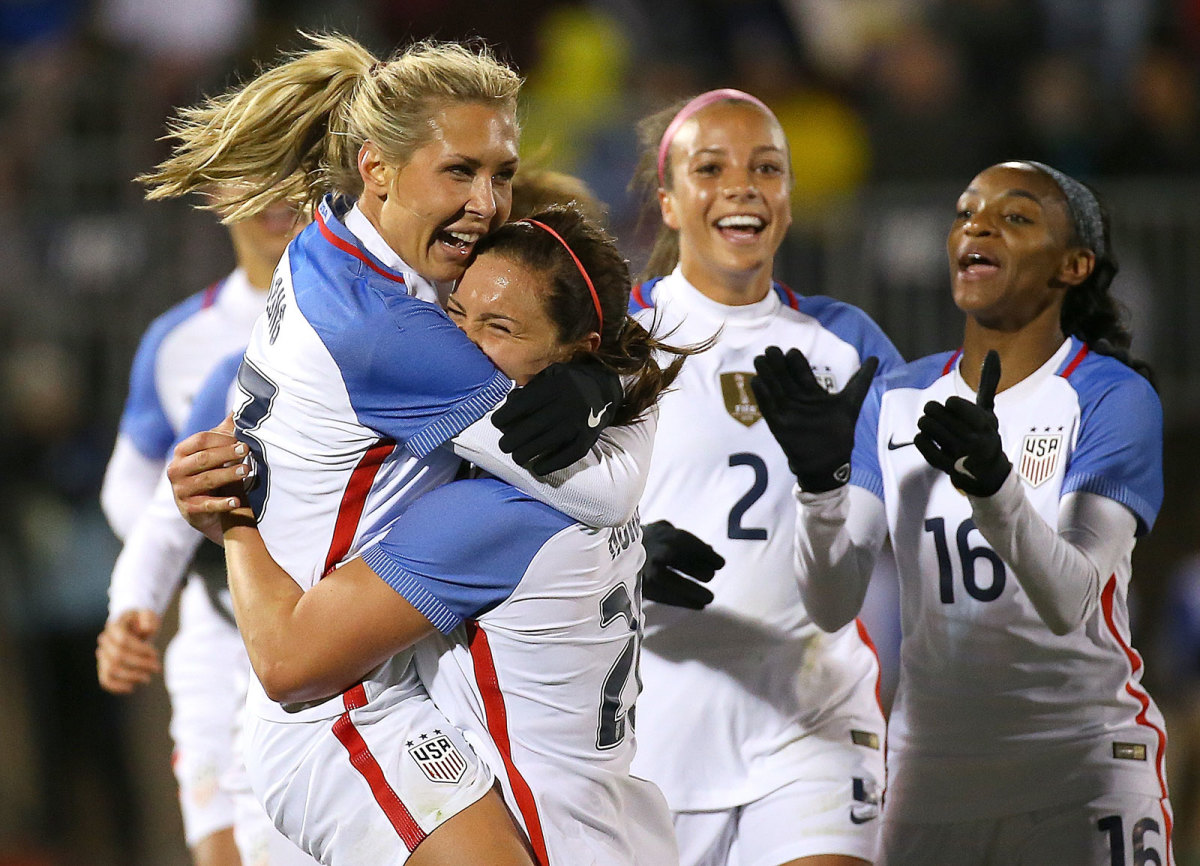
Allie Long, left scores twice, and five other players score as well in a 7-0 rout of Colombia in East Hartford, Connecticut.
USMNT vs. Guatemala, March 29
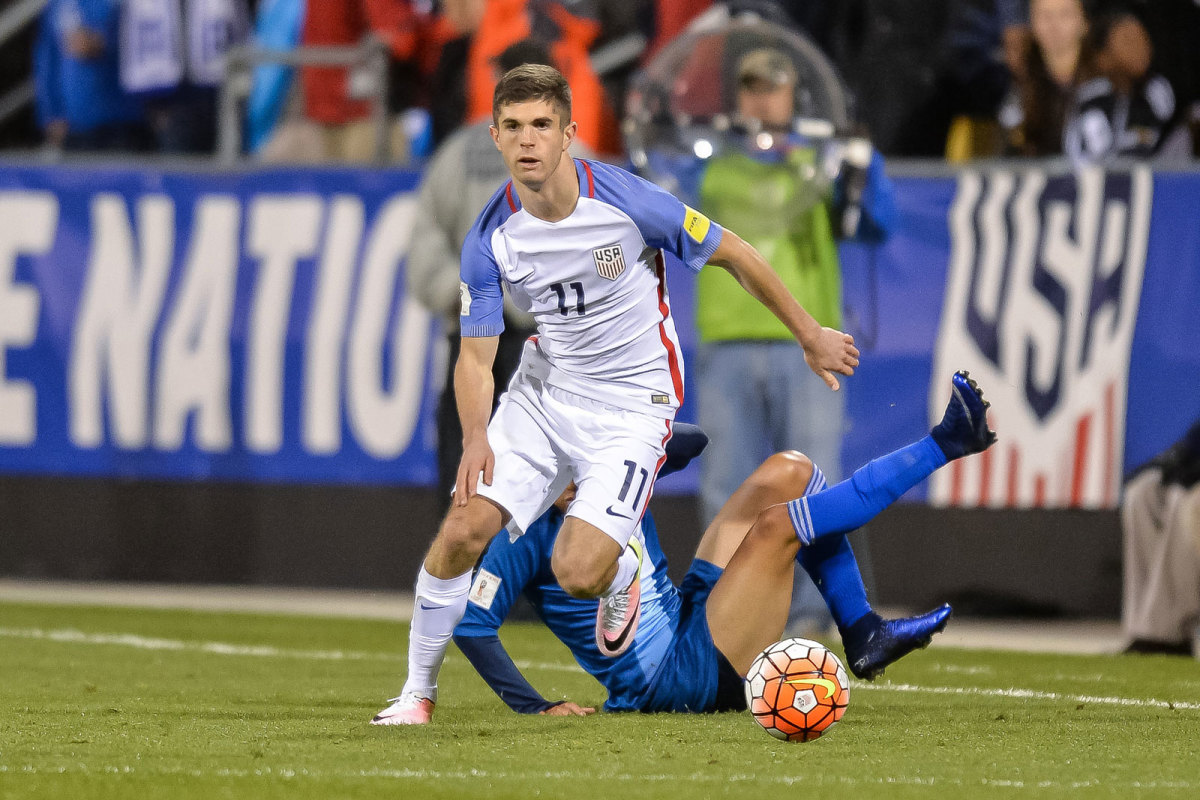
Christian Pulisic, 17, makes his U.S. debut in a World Cup qualifier in Columbus, Ohio, becoming cap-tied to the USA. He was otherwise eligible for Croatia.
USMNT vs. Guatemala, March 29
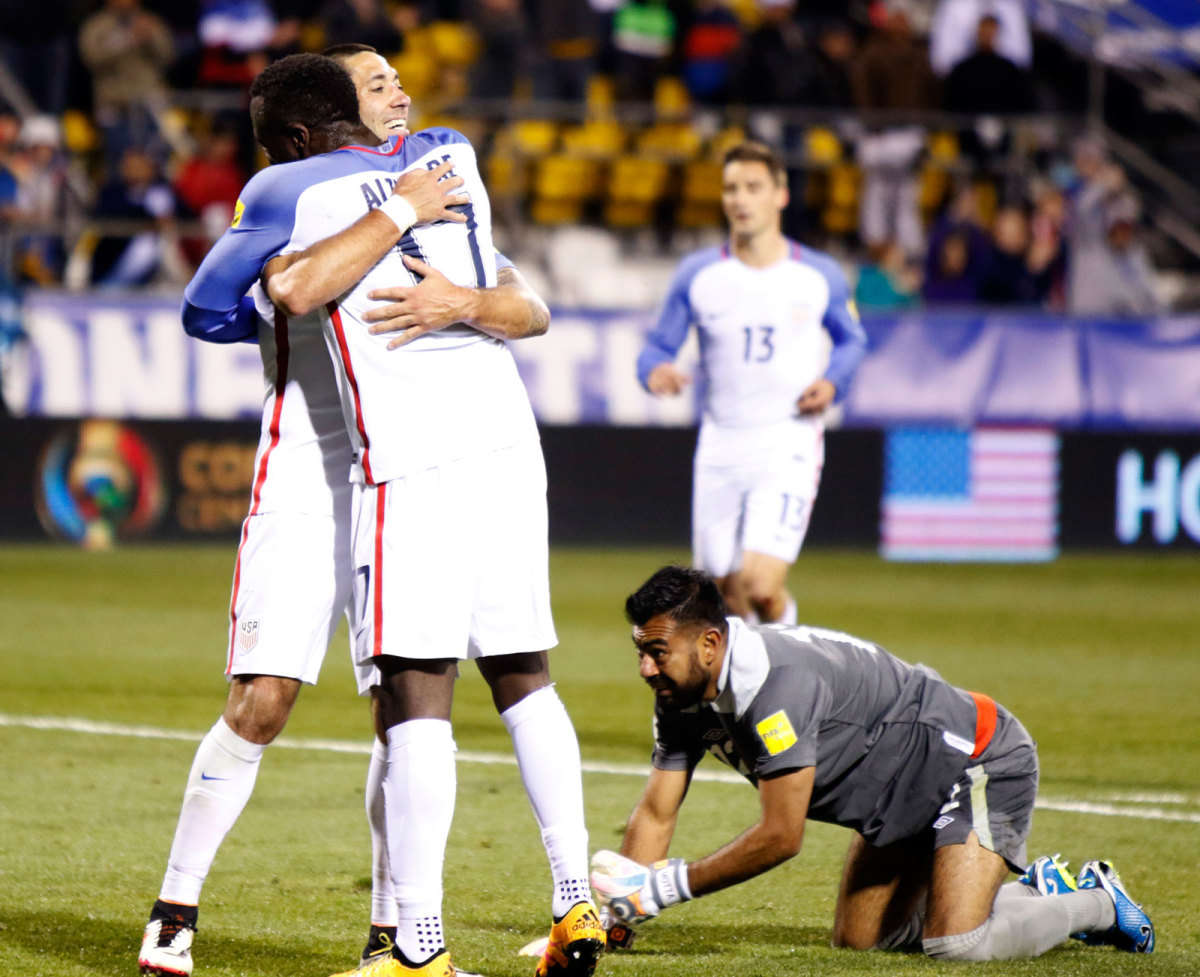
Clint Dempsey and Jozy Altidore celebrate during a thorough 4-0 World Cup qualifying win, putting the USA's campaign back on track after the setback in Guatemala.
USMNT vs. Guatemala, March 25
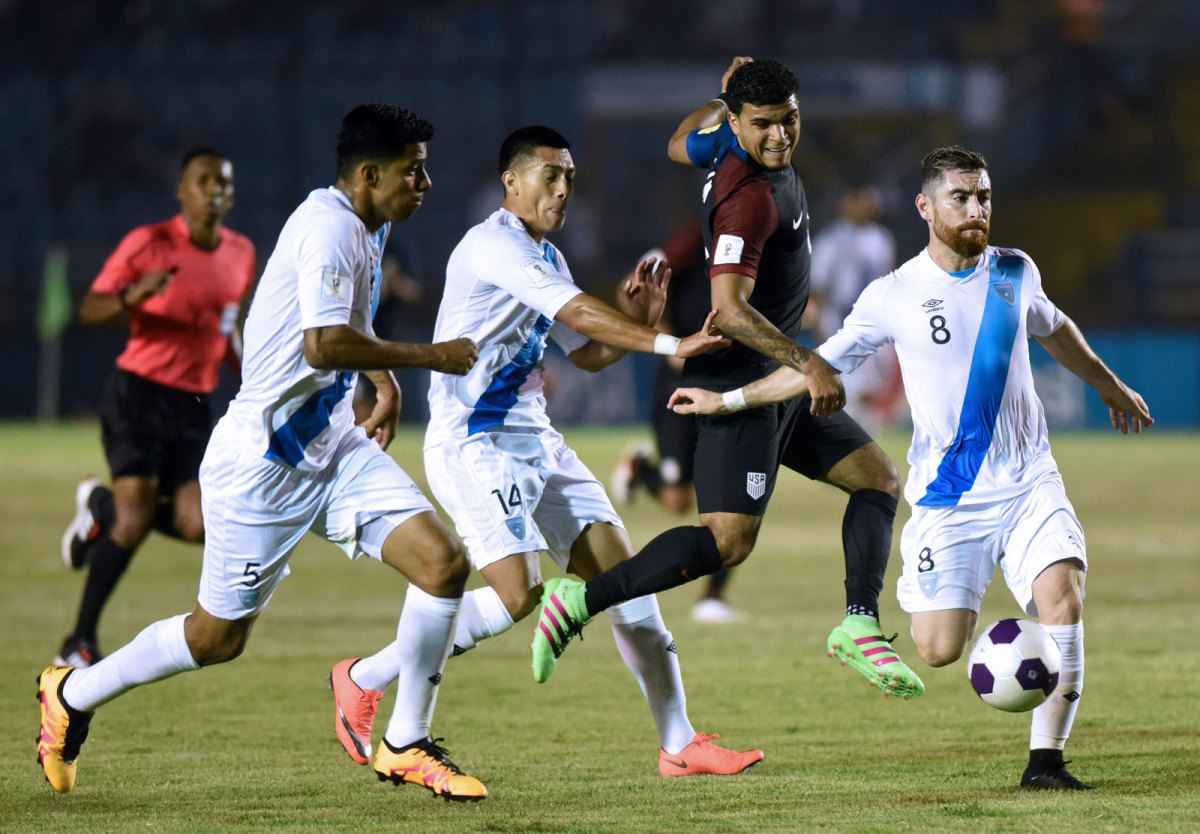
There was no way through for DeAndre Yedlin and the USA during a 2-0 loss in Guatemala in what was a stunning setback in the Americans' World Cup qualifying campaign.
USWNT vs. Germany, March 9
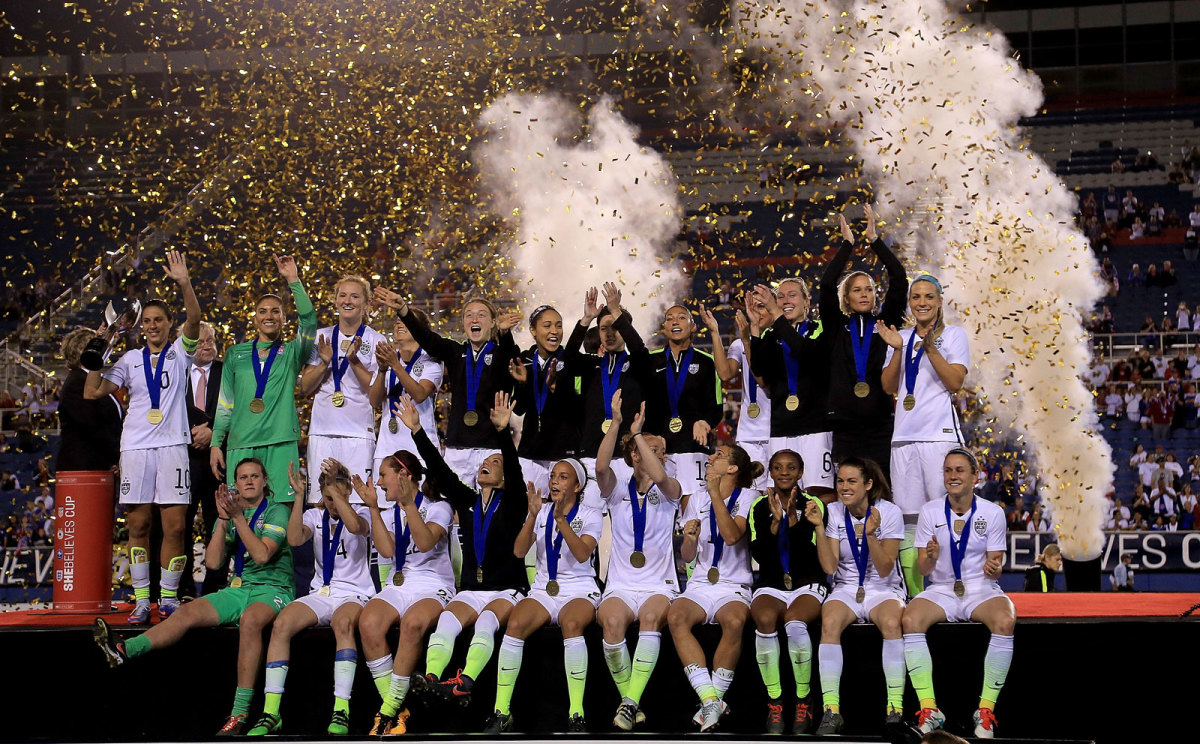
The USWNT celebrates the inaugural SheBelieves Cup title after beating European powers England, France and Germany in succession.
USWNT vs. Germany, March 9
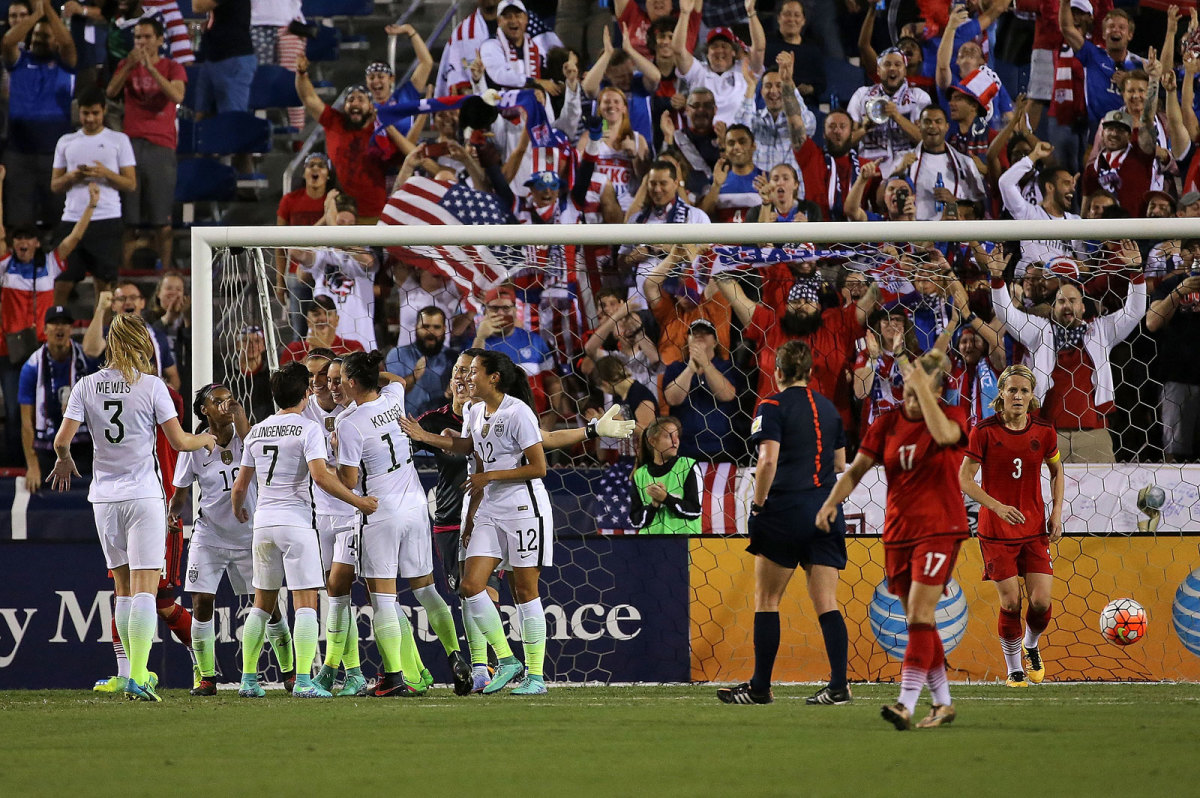
The U.S. celebrates Alex Morgan's equalizer vs. Germany in the SheBelieves Cup in Boca Raton, Florida. Samantha Mewis's winner a few minutes later cemented the Americans' overall triumph in the competition.
USWNT vs. France, March 6
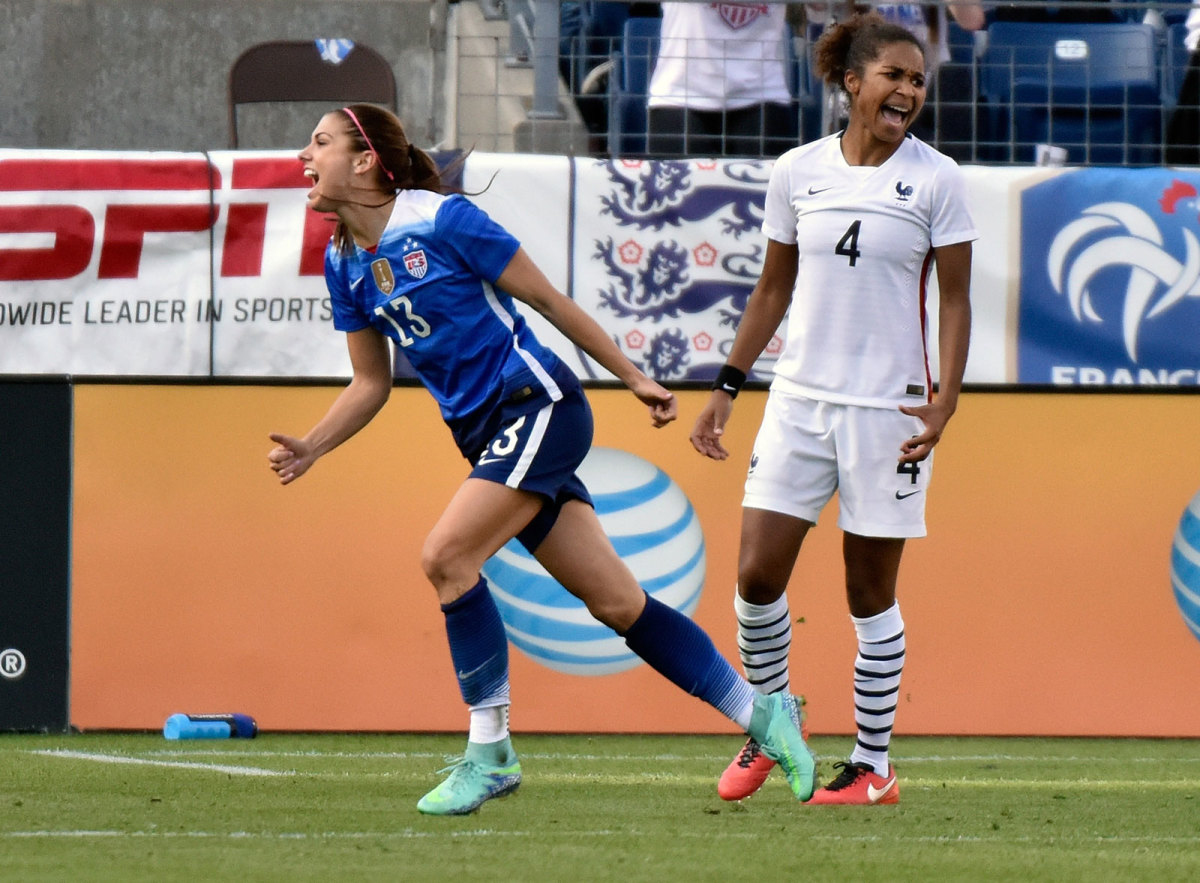
Alex Morgan scores the game-winner in a 1-0 victory over France in the second game of the SheBelieves Cup in Nashville, Tennessee.
USWNT vs. England, March 3
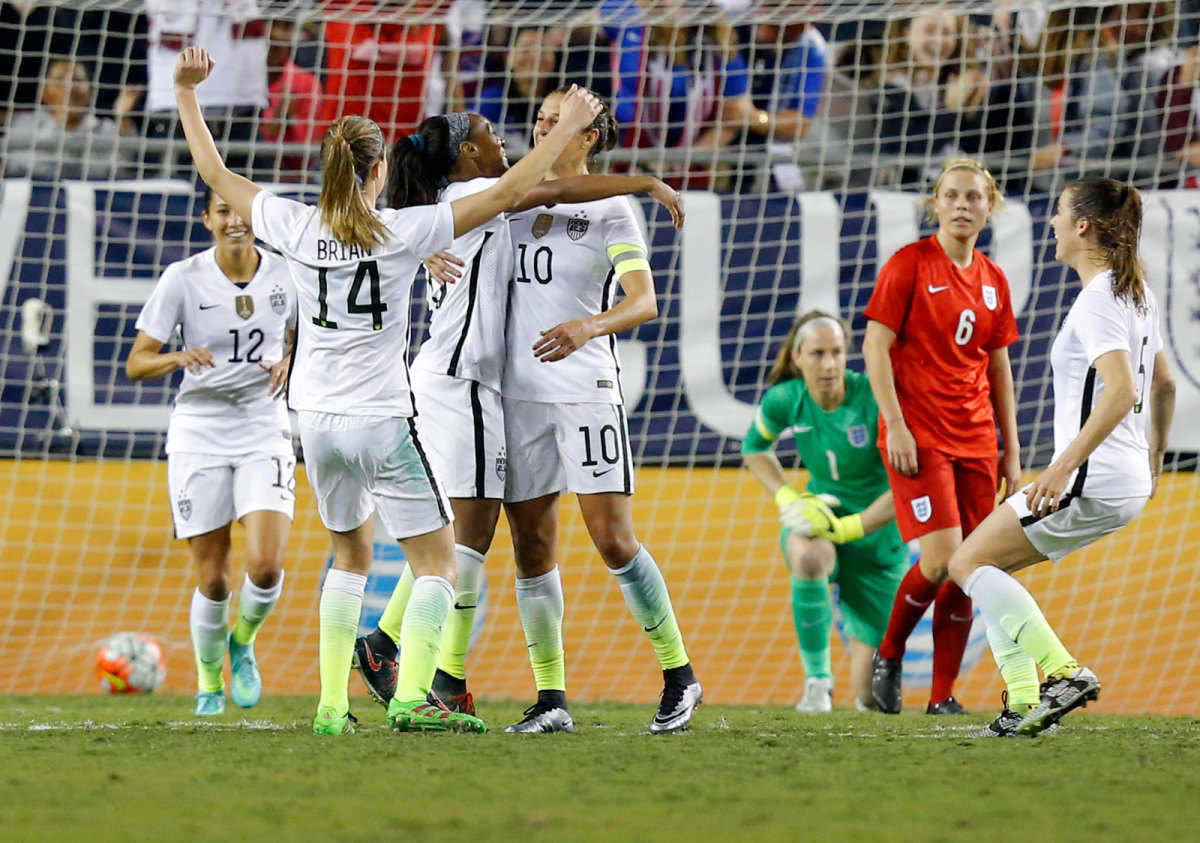
Crystal Dunn is mobbed after her game-winning goal kicks off the SheBelieves Cup in a 1-0 triumph in Tampa Bay, Florida.
USWNT vs. Canada, February 21
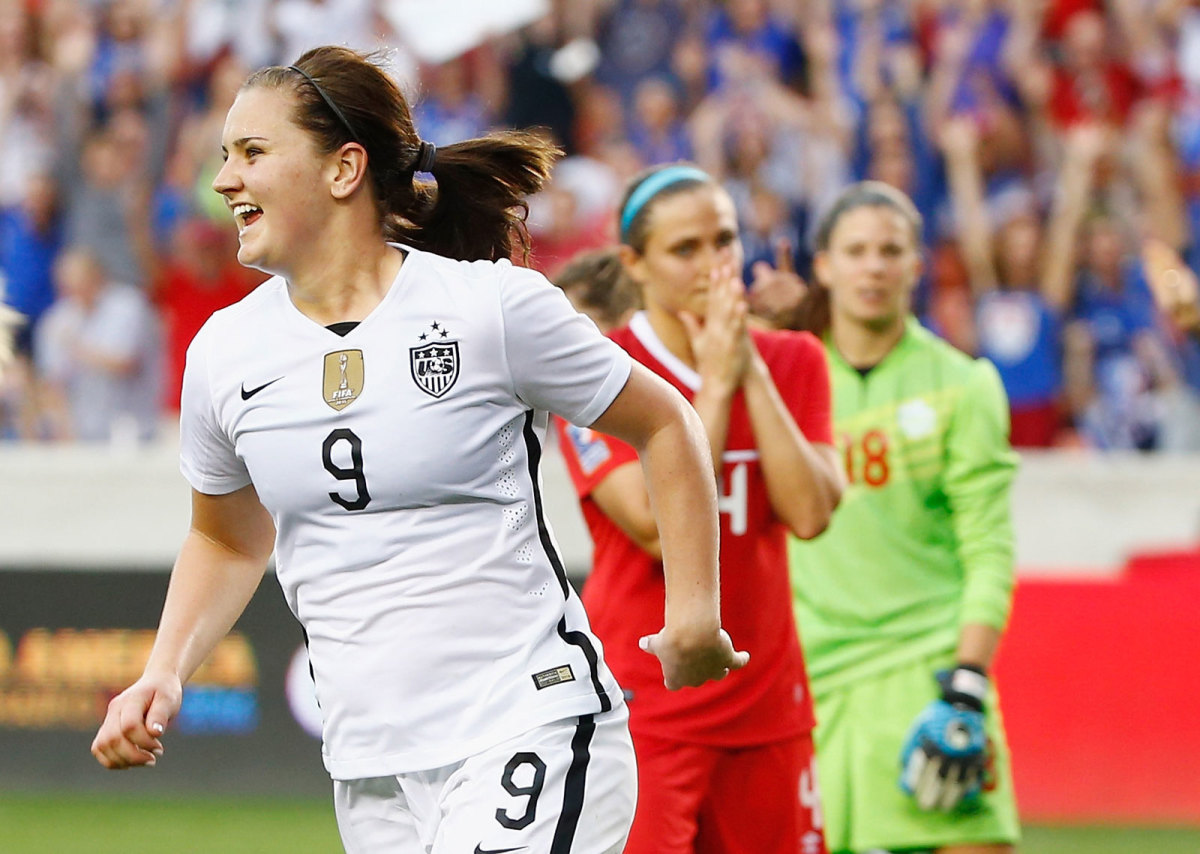
Lindsey Horan celebrates her goal that helps the USA to a 2-0 win over Canada and a first-place finish in CONCACAF Olympic qualifying.
USWNT vs. Trinidad and Tobago, February 19
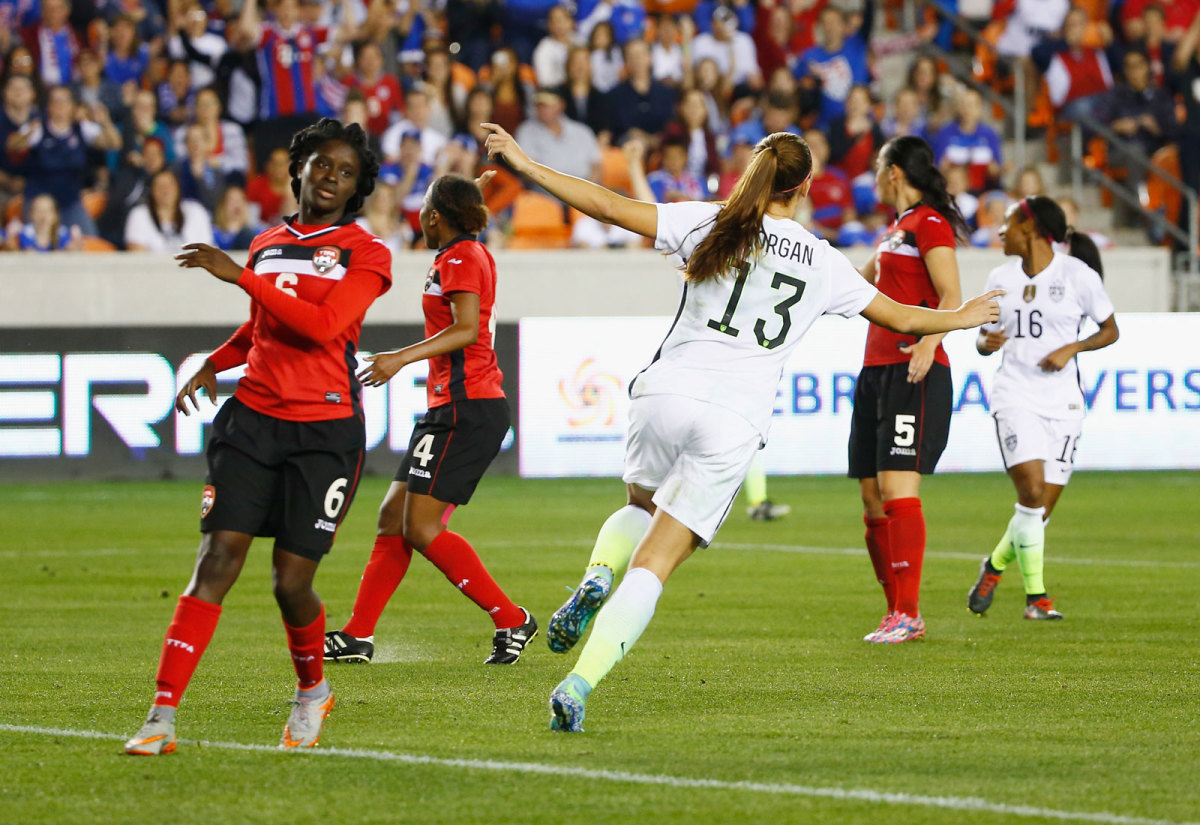
Alex Morgan celebrates one of her three goals that helped the U.S. clinch a berth in the 2016 Olympics after a 5-0 triumph in Houston.
USWNT vs. Puerto Rico, February 15
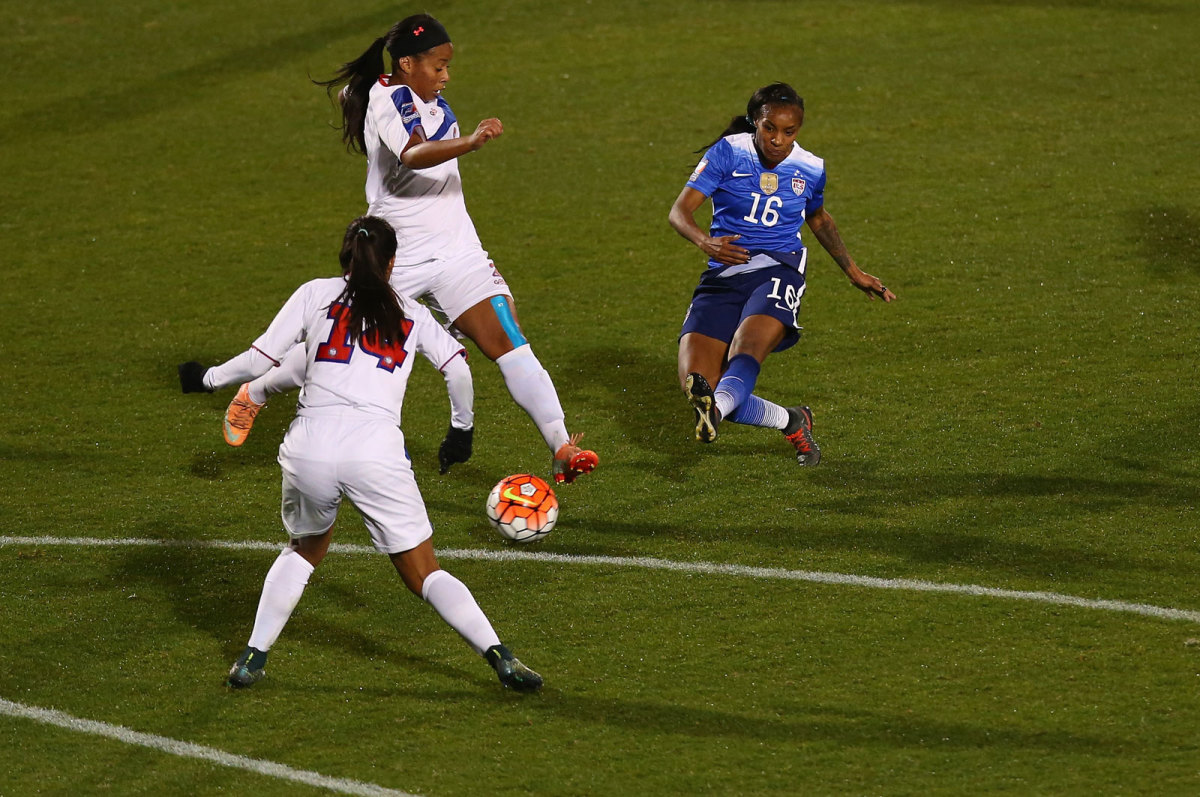
Crystal Dunn scores one of her five goals, tying a single-game U.S. record in a 10-0 rout to close group play in Olympic qualifying.
USWNT vs. Mexico, February 13
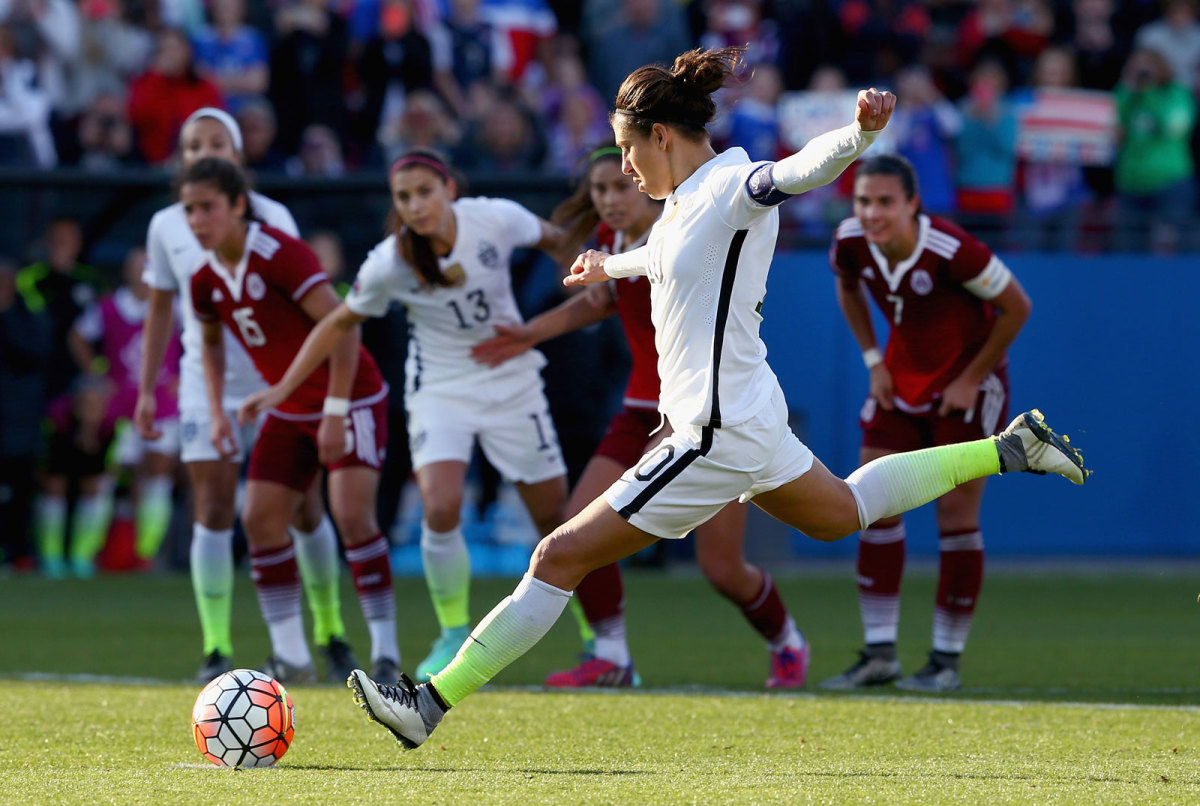
The U.S. needed a penalty kick from Carli Lloyd to beat Mexico 1-0 in the second match of CONCACAF's Olympic qualifying tournament.
USWNT vs. Costa Rica, February 10
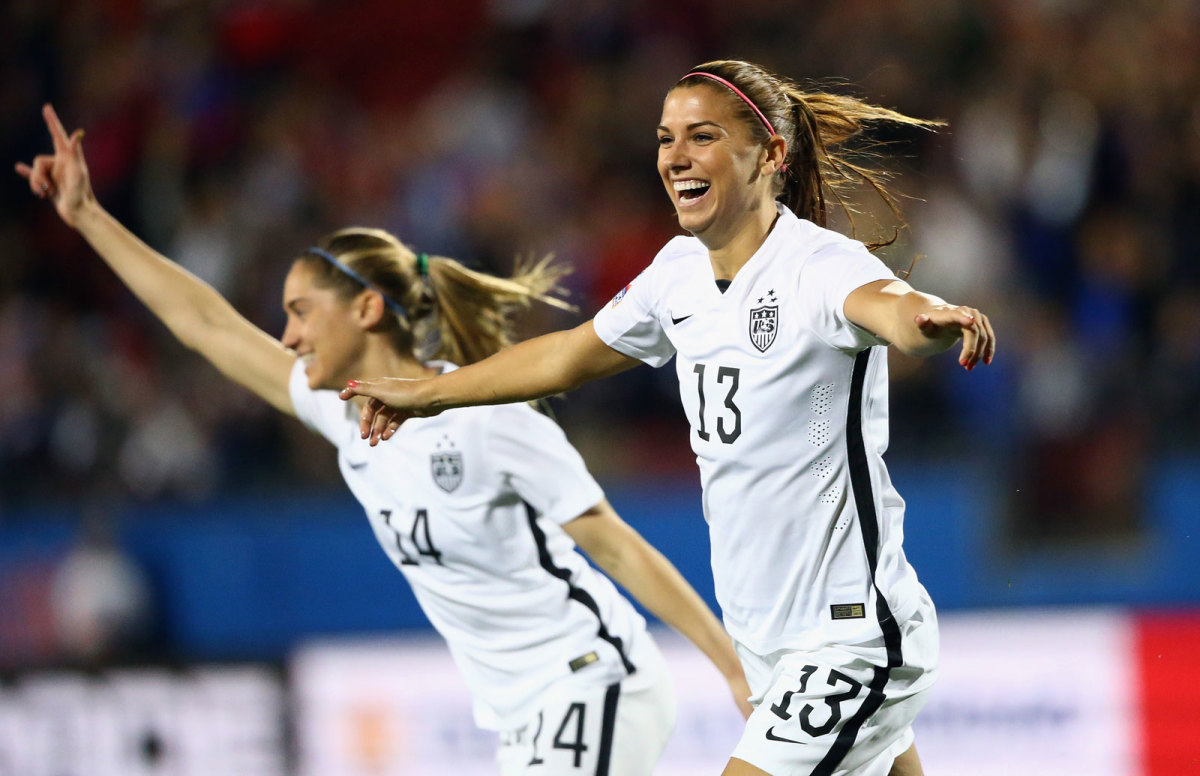
Alex Morgan scores the fastest goal in U.S. history, netting 12 seconds into the USWNT's Olympic qualifying campaign and sending the Americans on their way to a 5-0 win.
USMNT vs. Canada, February 5
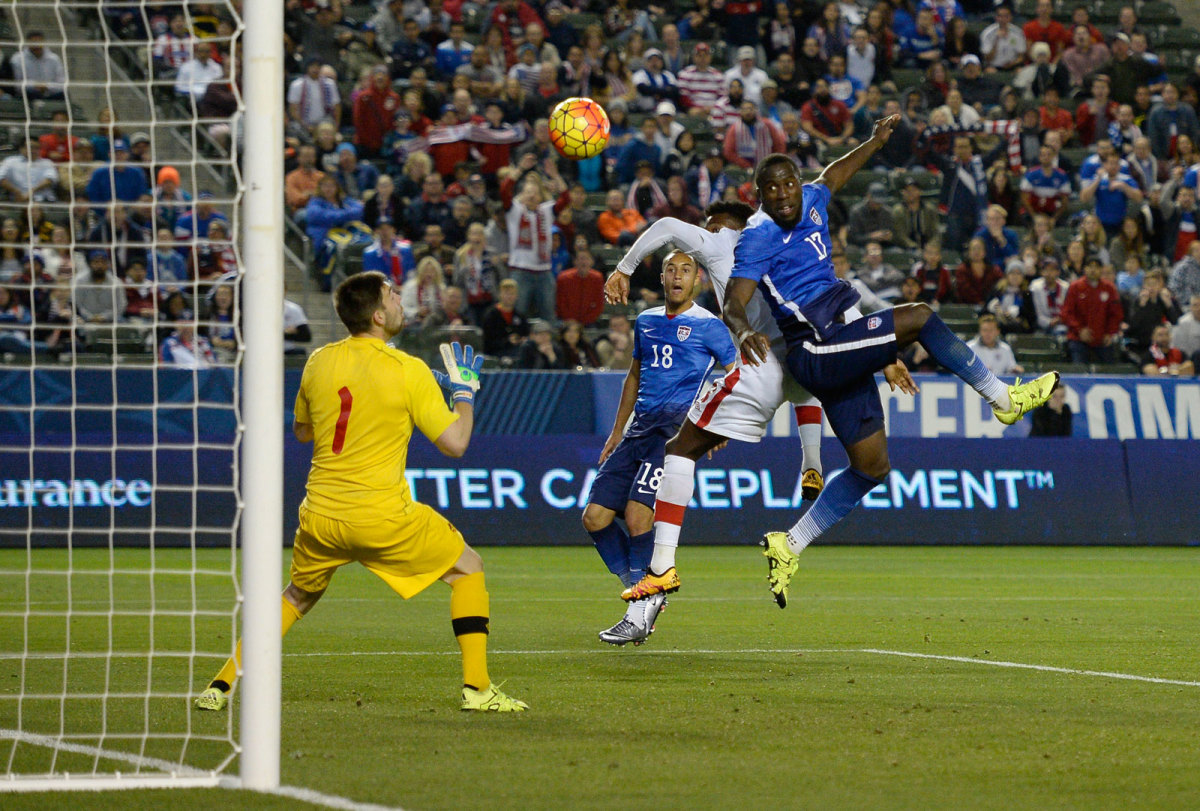
Jozy Altidore heads in the winner to secure a 1-0 win over Canada at StubHub Center to cap the annual winter training camp.
USMNT vs. Iceland, January 31
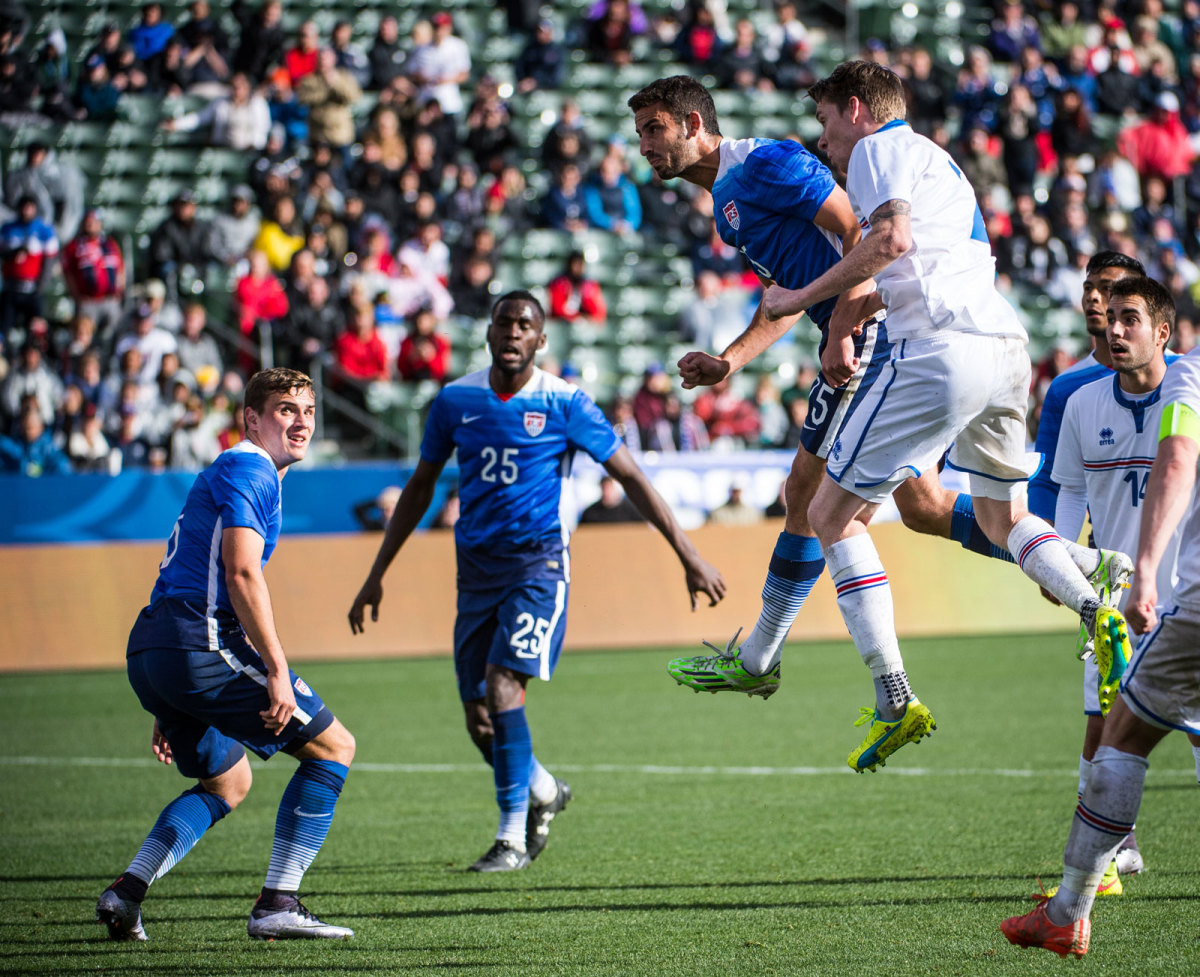
Steve Birnbaum heads in a late winner in a 3-2 victory over Iceland in the opening match of the year.
USWNT vs. Ireland, January 23
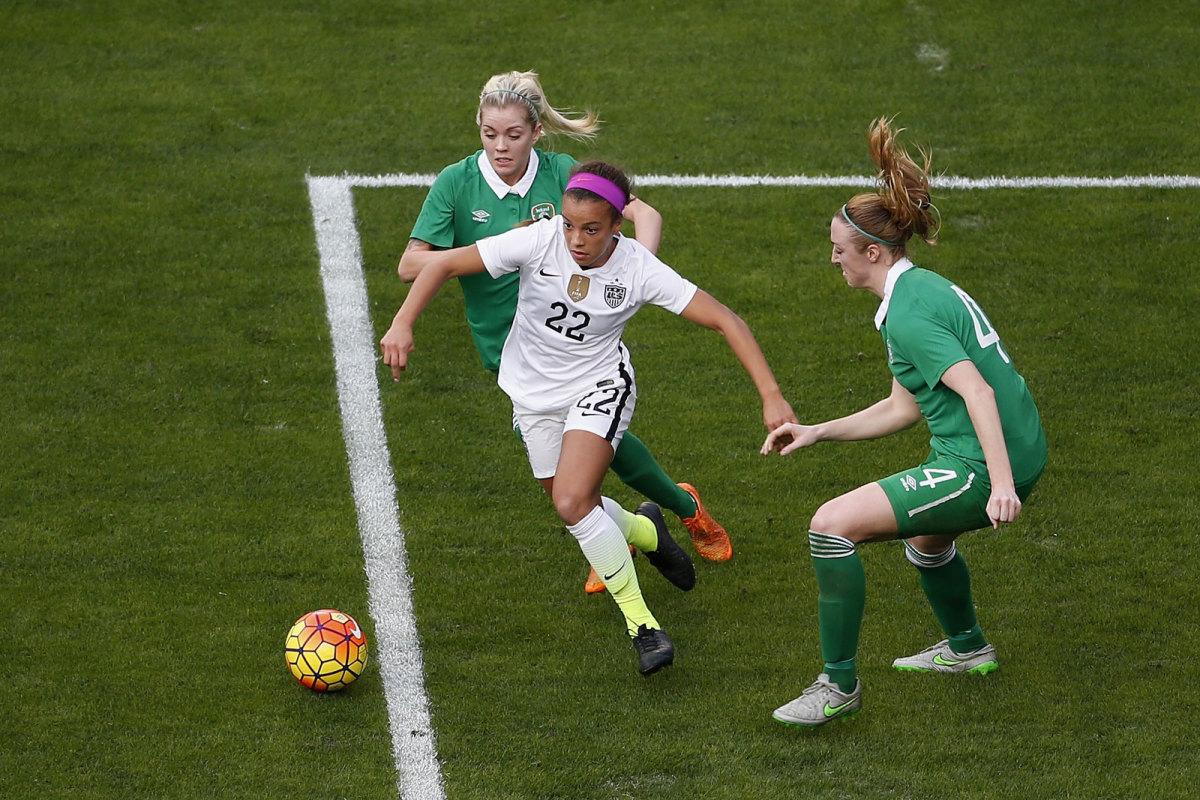
17-year-old Mallory Pugh scores on her debut, helping cap a 5-0 win for the USA to open the year. Carli Lloyd led the way with a hat trick, and Alex Morgan scored as well in San Diego.
Grant Wahl - 40 teams, 10 groups of four, 24-team knockout stage
If I had my choice, I’d leave the World Cup at 32 teams, which is a perfect number. But since the assignment is we have to expand the field and figure out the best way to do it, I would go with 40 teams in 10 groups of four. Keeping the groups at four teams each allows for the final group-stage games to still take place at the same time, which is key.
• WAHL: Concerns linger over Infantino's proposed expansion format
The group stage would feed into a 24-team knockout stage. The eight group winners with the best group-stage record would get byes. Two group winners, all 10 second-place group teams and the four best third-place teams would comprise the 16 teams that play to make the round of 16. Once you have your round of 16, the knockout rounds proceed from there.
It’s not perfect like 32 teams, but it does allow final group-stage games to take place simultaneously, and it prevents the situation in Gianni Infantino’s 48-team plan in which 16 teams end up playing only one game at the World Cup.
